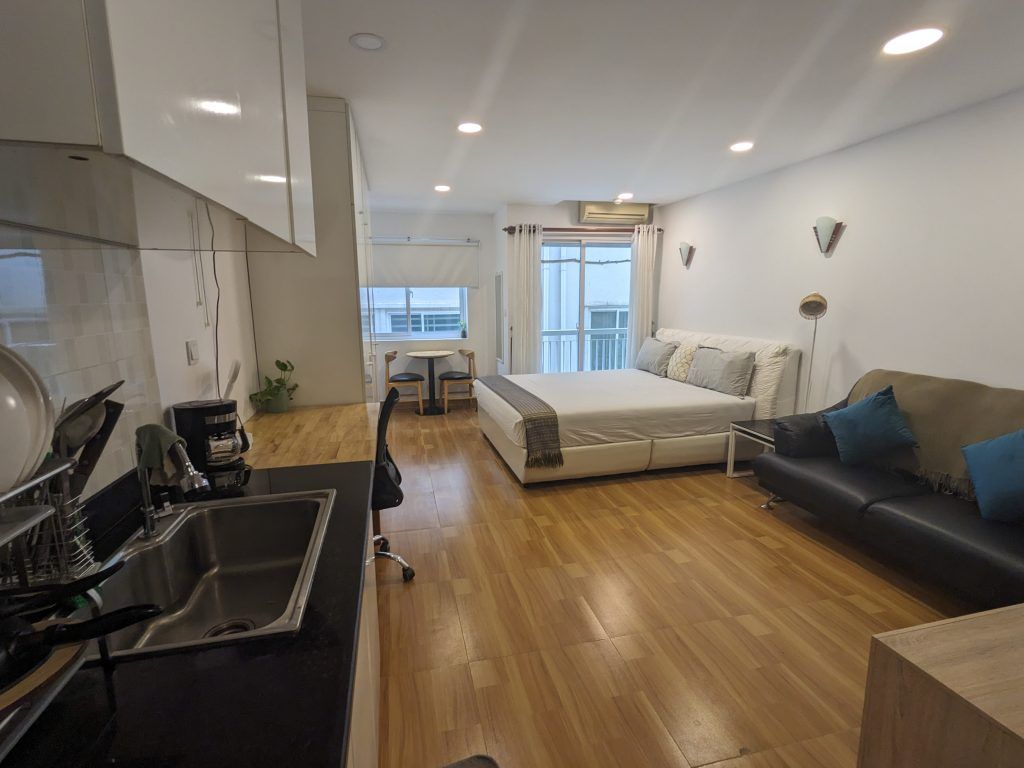The Khmer Empire lasted from 802 to 1431 and at its height it ruled most of current Southeast Asia. Its capital city Angkor reflected its power. From Wikipedia: “In 2007, an international team of researchers using satellite photographs and other modern techniques concluded that Angkor had been the largest pre-industrial city in the world by surface area, with an elaborate infrastructure system connecting an urban sprawl of at least 1,000 square kilometres (390 sq mi) to the well-known temples at its core.”
The core of this ancient capital sits just outside the current Cambodian city of Siem Reap. As you ride around this area of lush jungle forests and broad rice paddies, these temples can rise out of the background like a series dreamlike chimeras.
Angkor Wat
The most famous of the Angkor ruins, Angkor Wat was originally built as a vast Hindu temple and then gradually converted to a Buddhist temple over the subsequent centuries. It is considered to be the largest religious structure in the world. While it has felt the ravages of time, parts of it have been in continuous religious use since its creation.
It’s a huge complex. Its outer moat is more than 5 kilometres long and its outer wall 3.6 kilometres long. The temple is a representation of Mount Meru, the home of the gods according to Hindu mythology. The central group of five towers symbolize the five peaks of the mountain, and the walls and moat symbolize the surrounding mountain ranges and ocean.
This temple is so important to Cambodia, it is a central part of the design of the country’s flag.

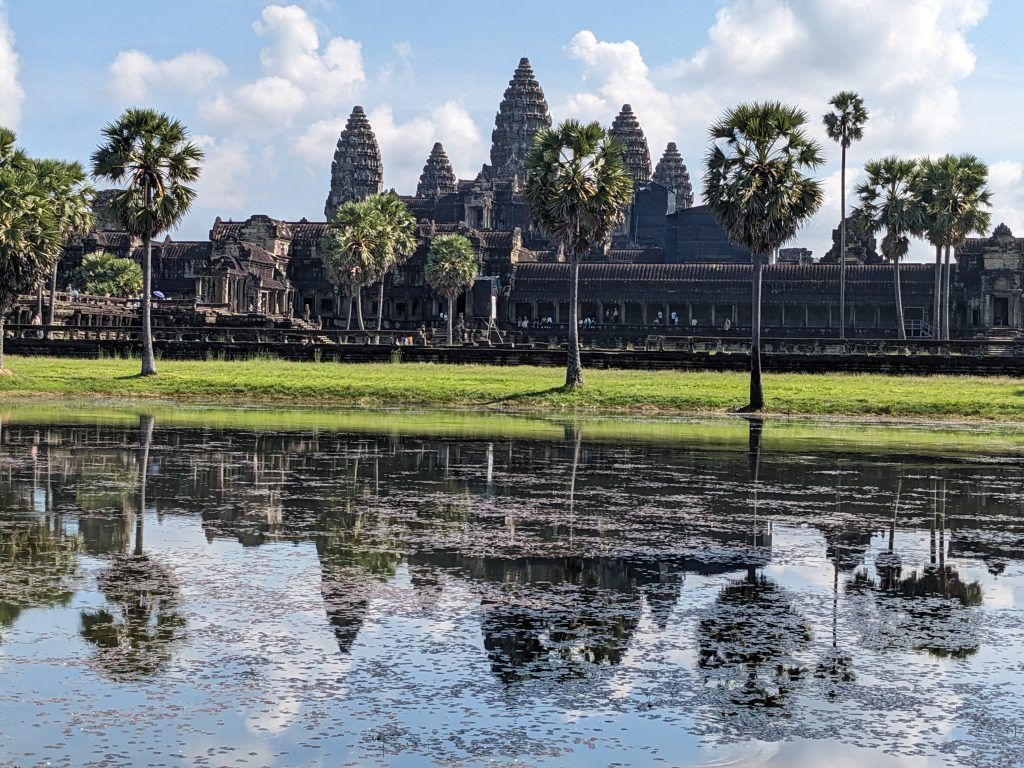
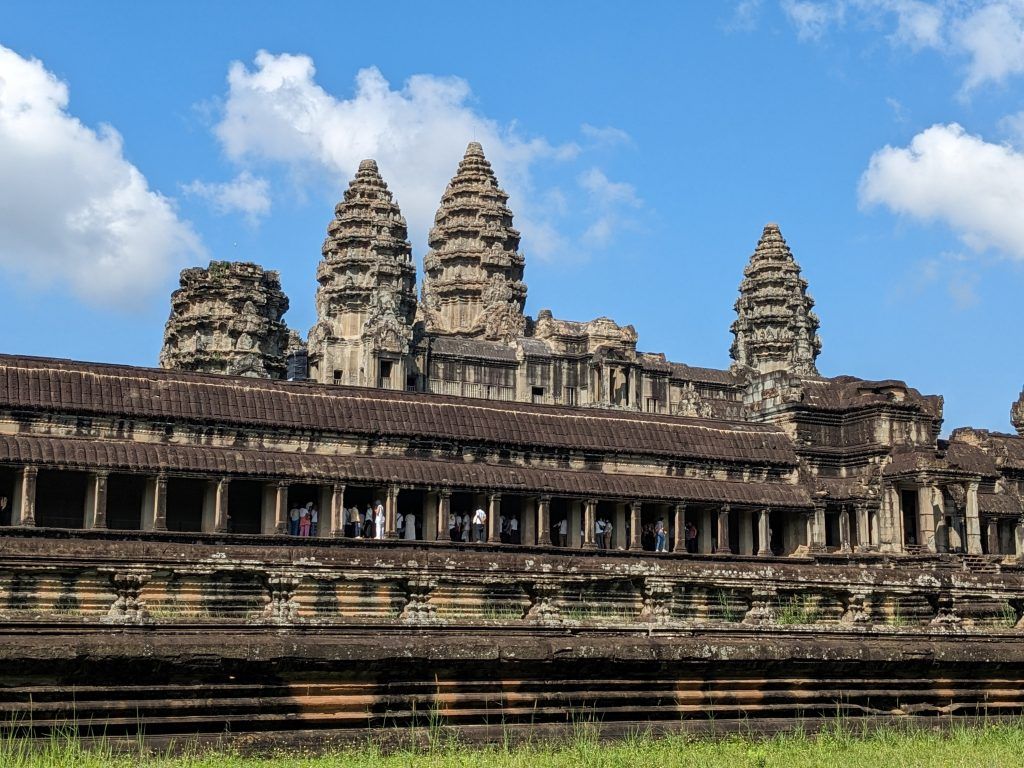
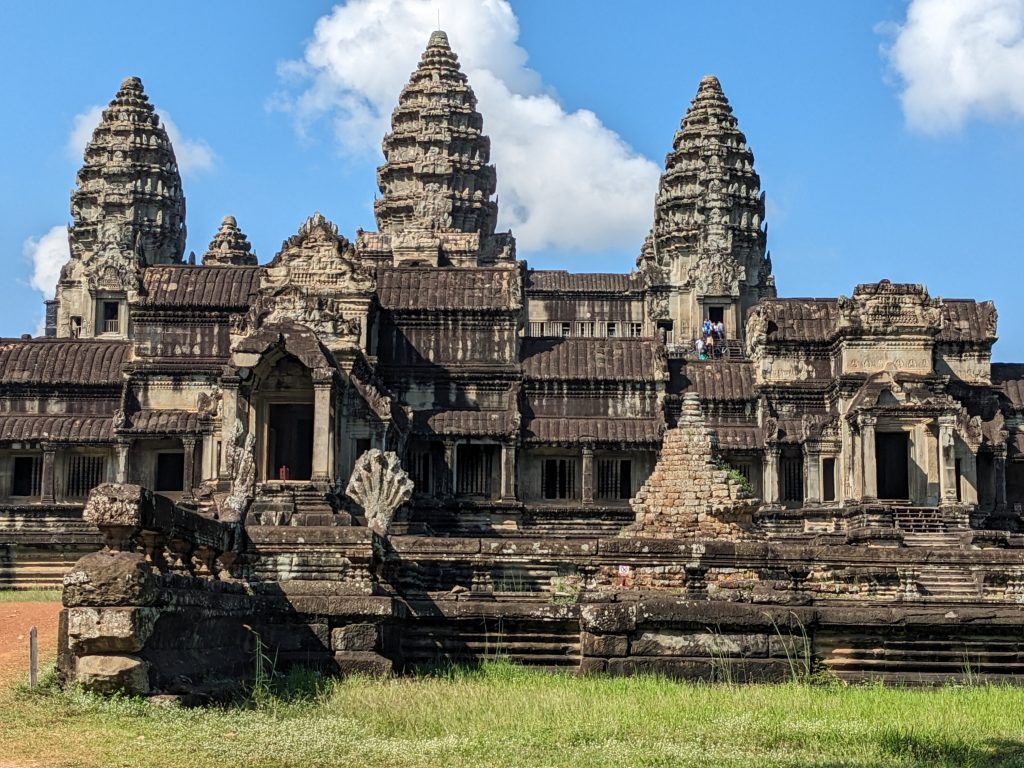

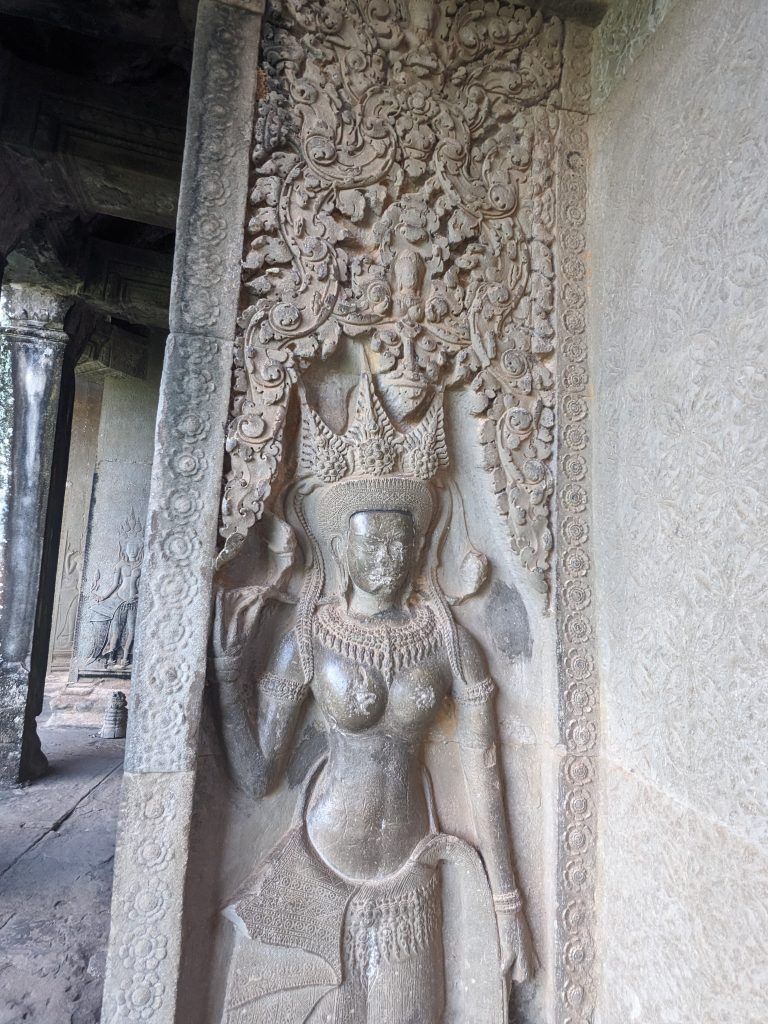
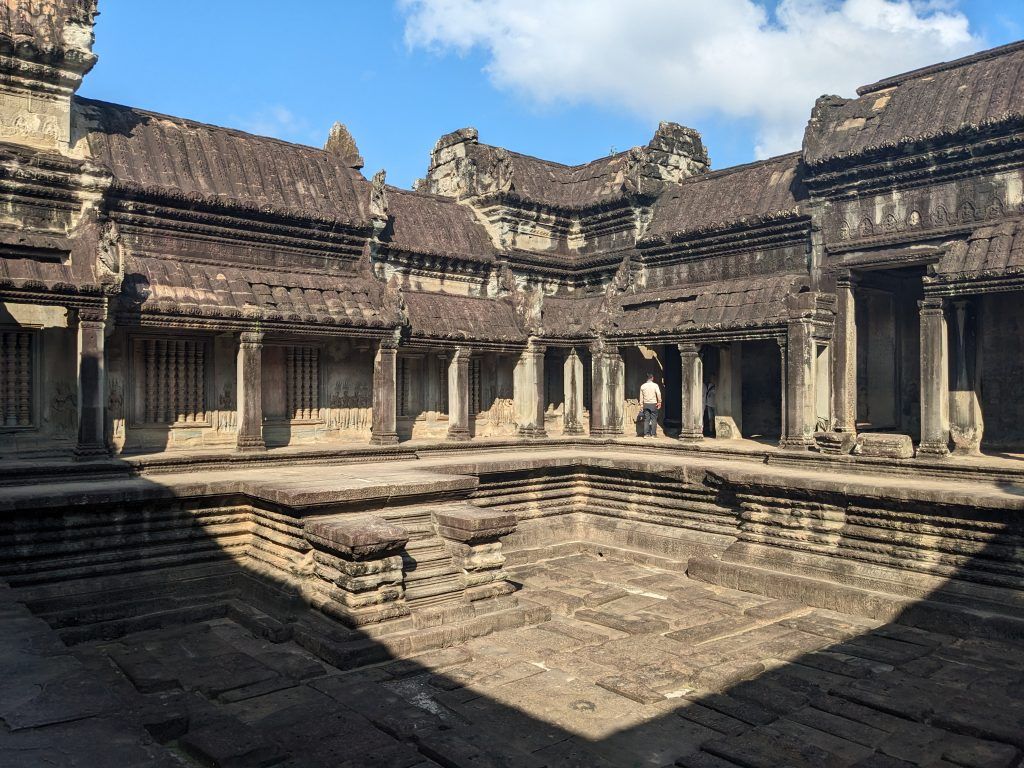
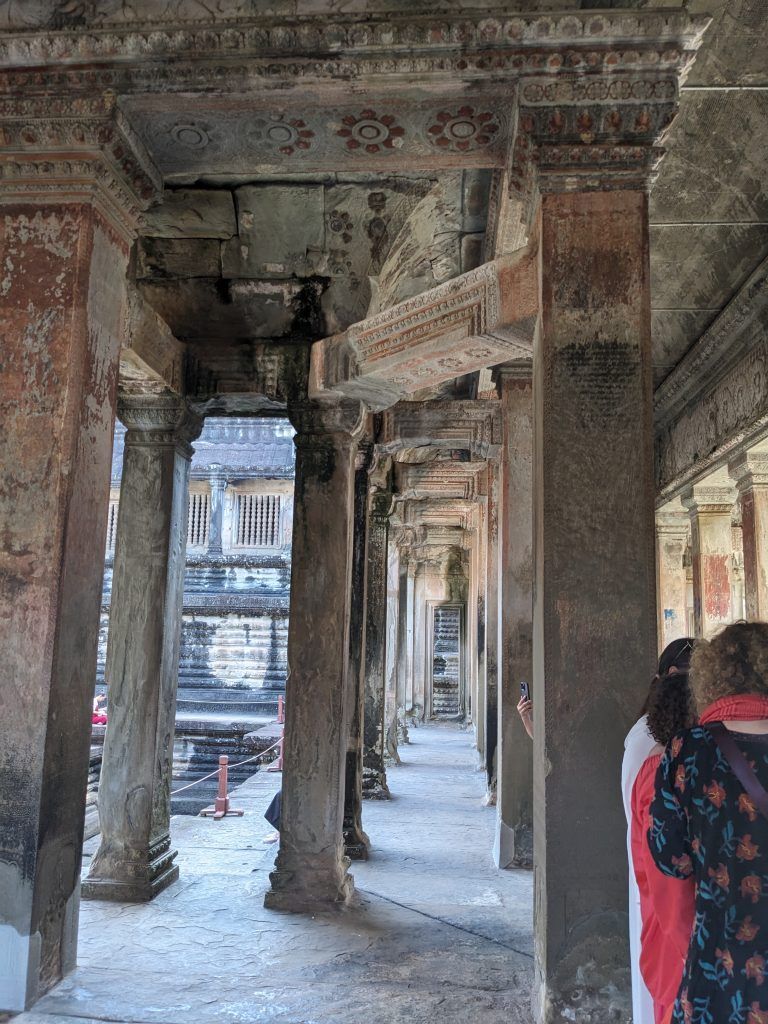
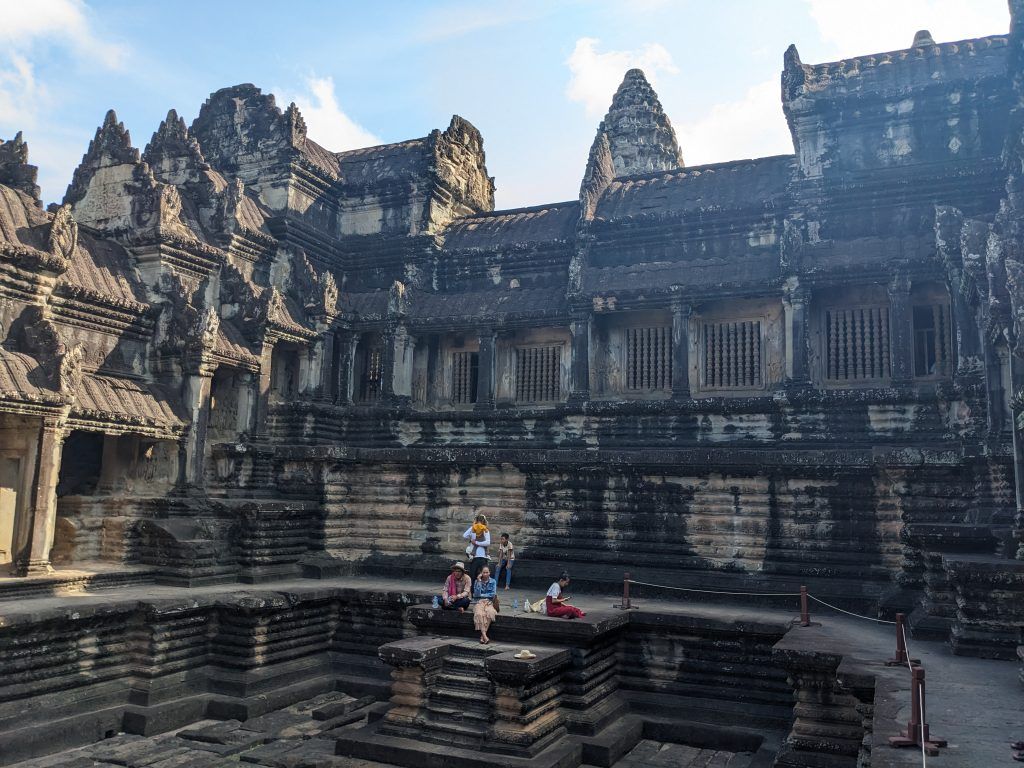
Its still in use today as a Buddhist temple and you can see monks throughout the grounds, some visiting and taking pictures like the rest of the tourists.
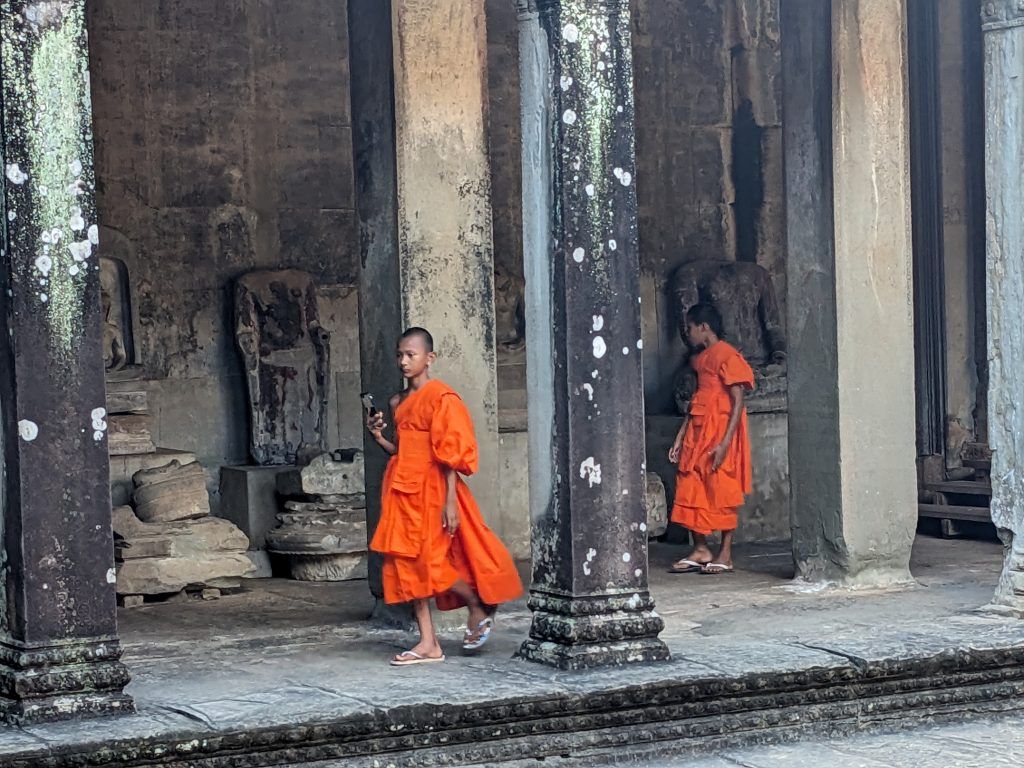
Access to the upper areas of the temple was progressively more exclusive, with the laity being admitted only to the lowest level. Luckily, in the present day, anyone can access the top levels to view the artwork, architecture and surrounding landscape of this formally exclusive area.
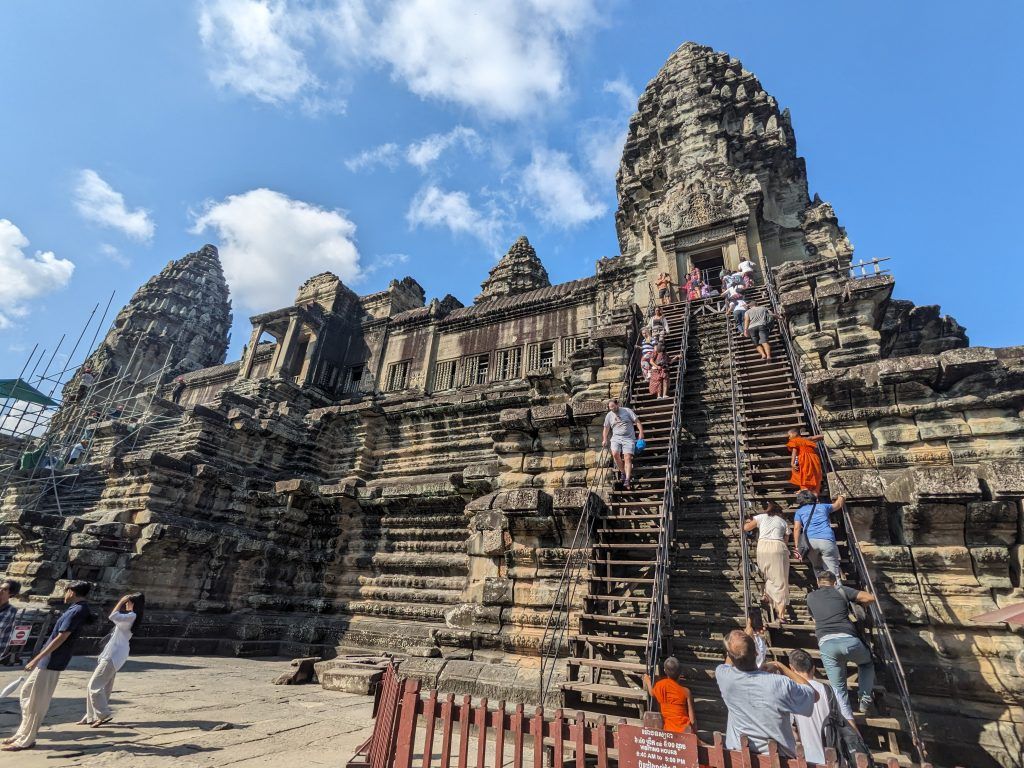
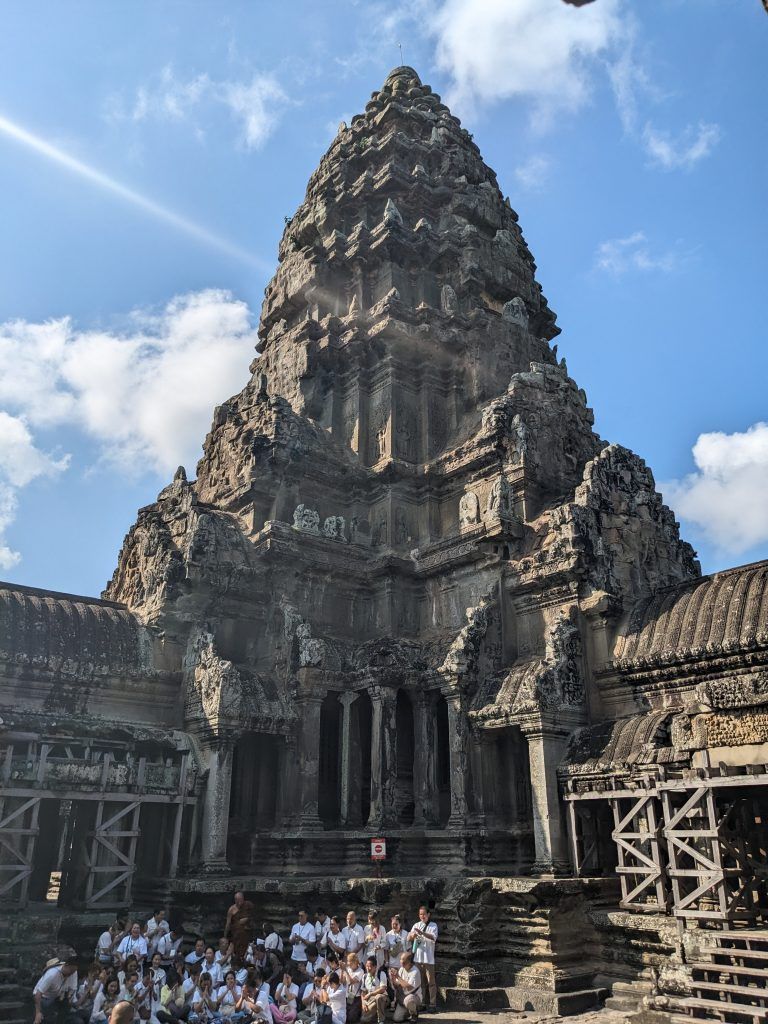
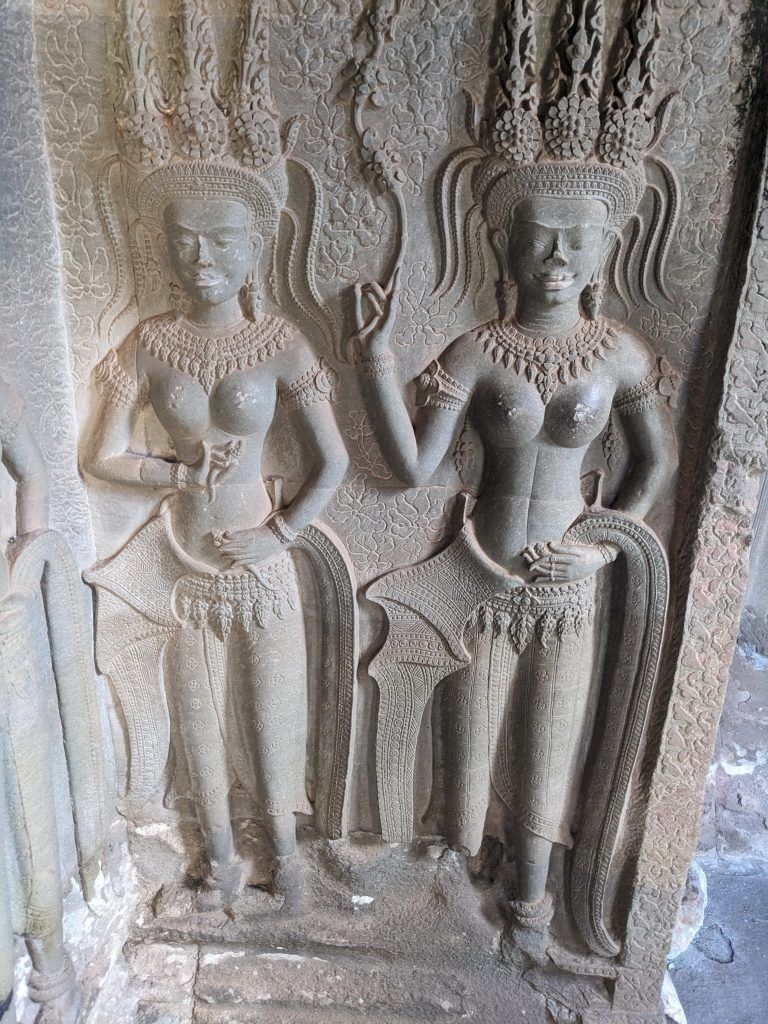
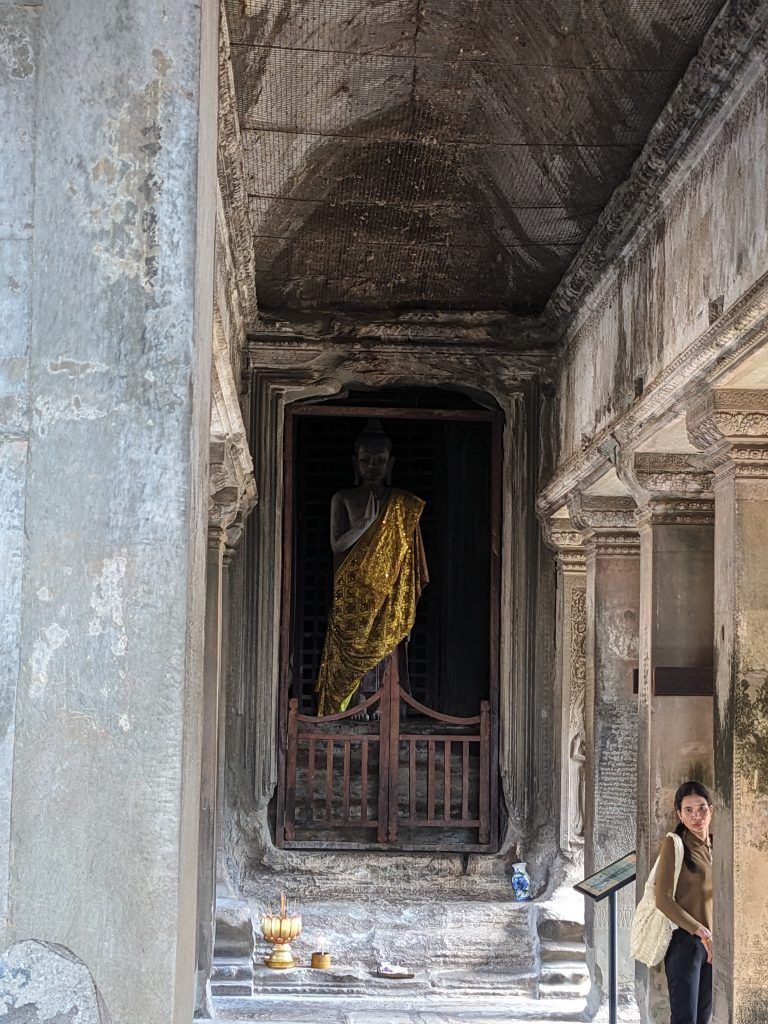
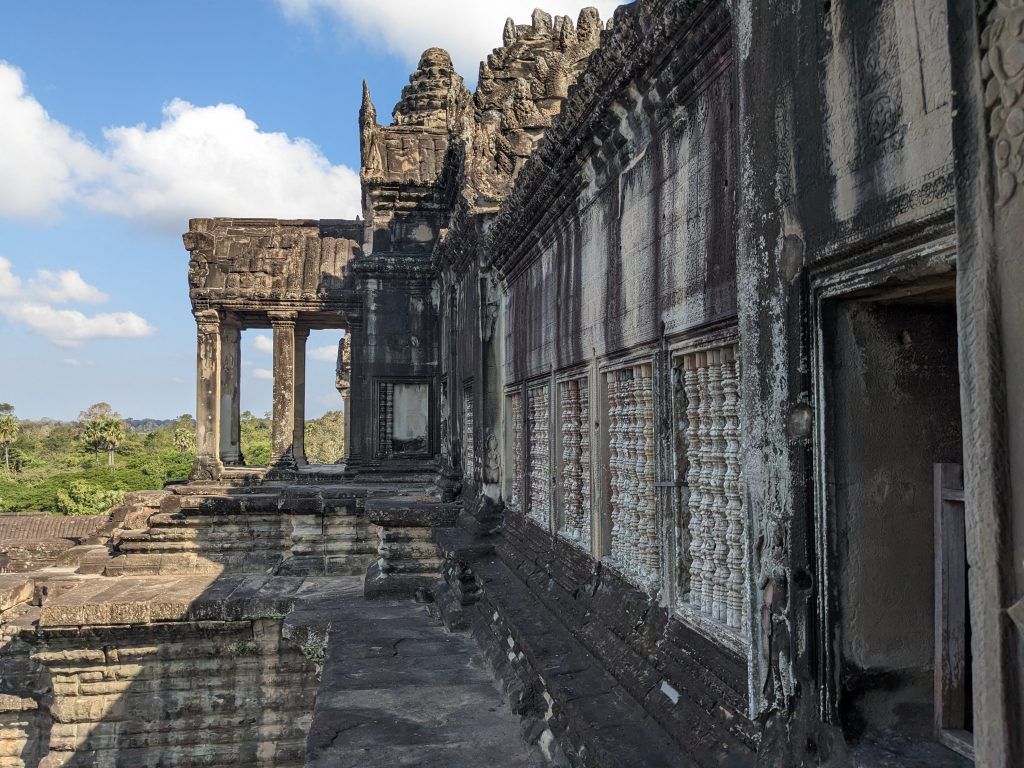
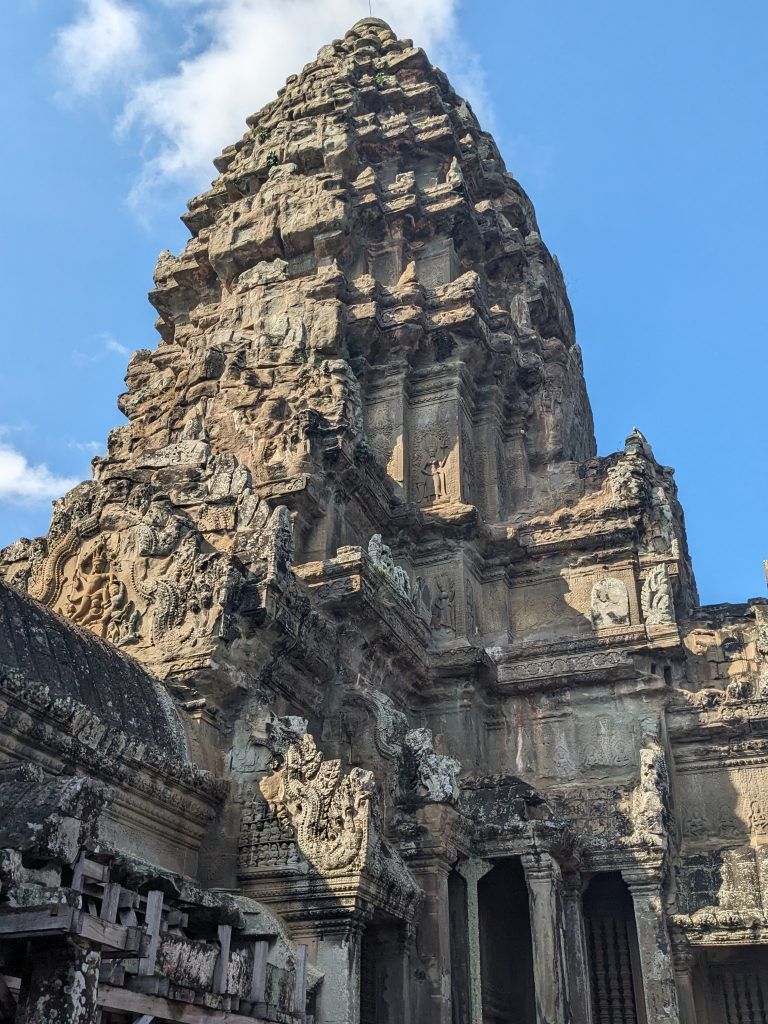
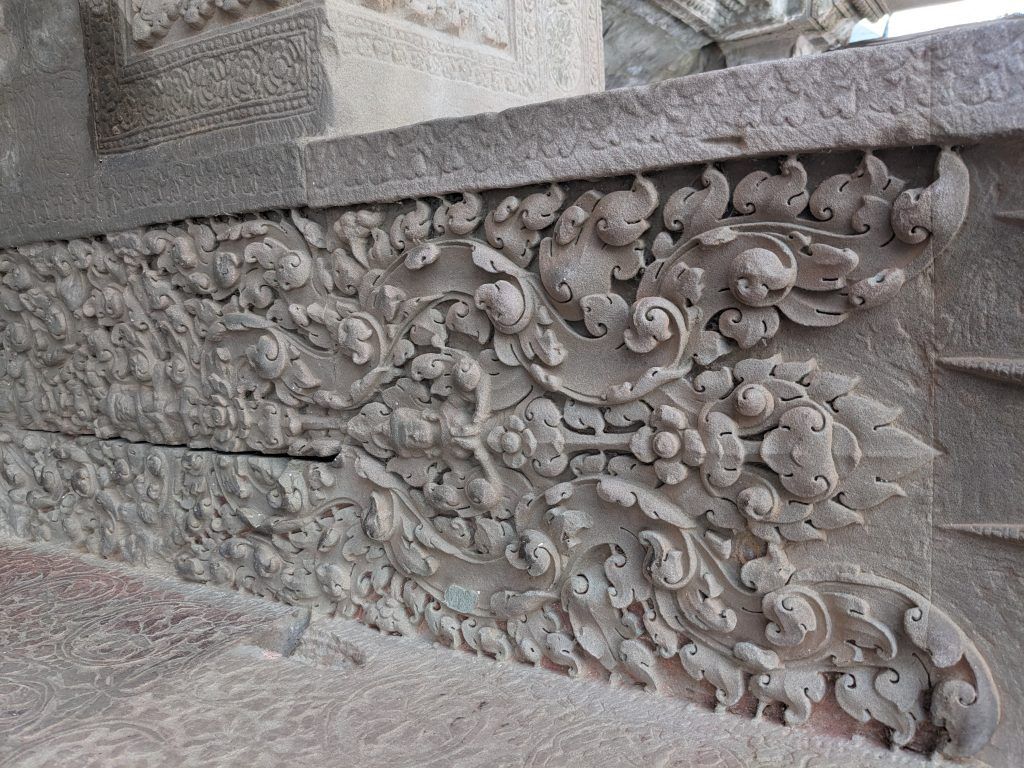
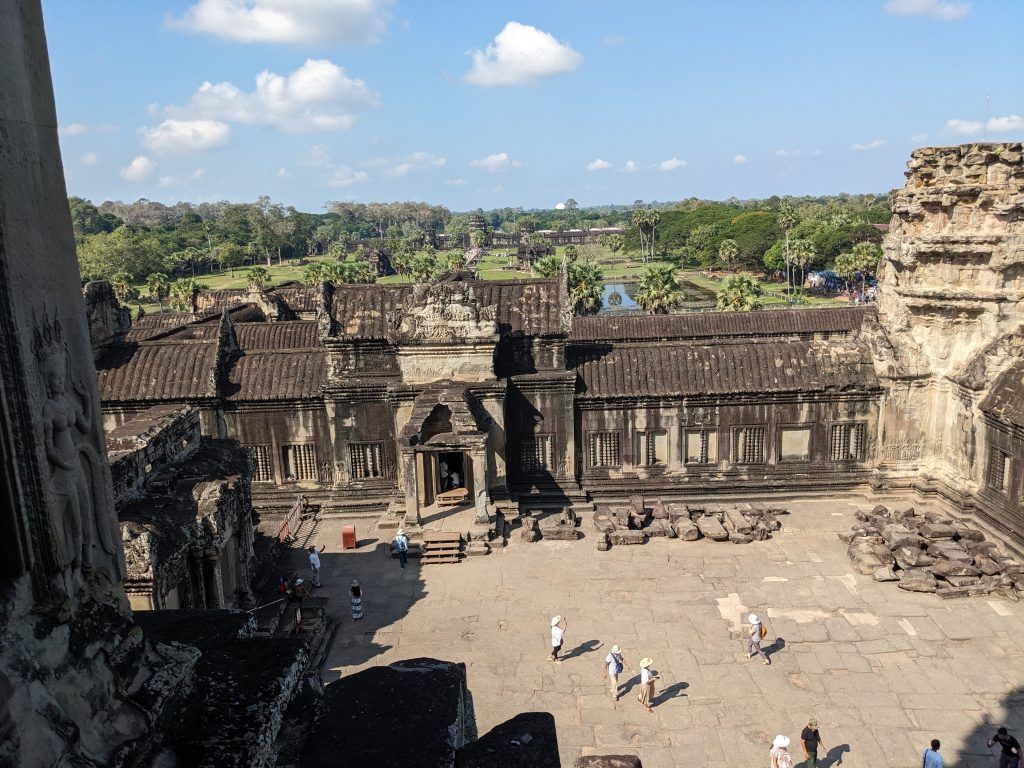
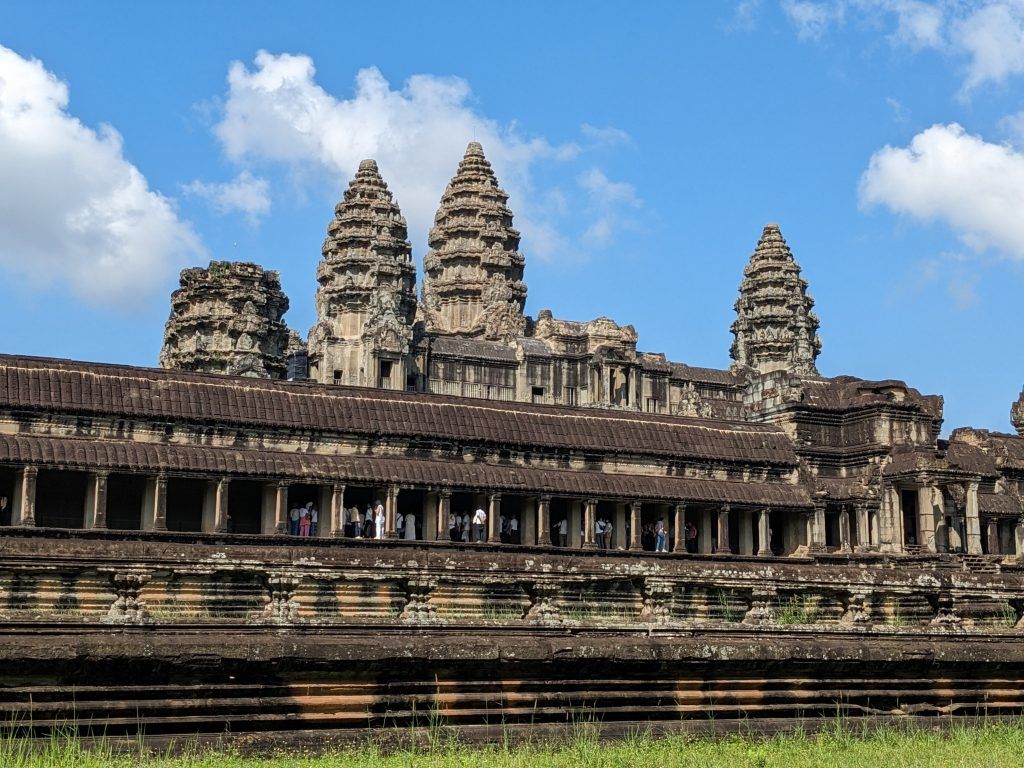
A troop of monkees enjoy the grounds as well.

Banteay Srei
Banteay Srei is a relatively small temple. But it was built largely of red sandstone, a medium that lends itself to the ability to create elaborate decorative wall carvings. This color and these carvings make it one of the most unique of the Angkor temples.


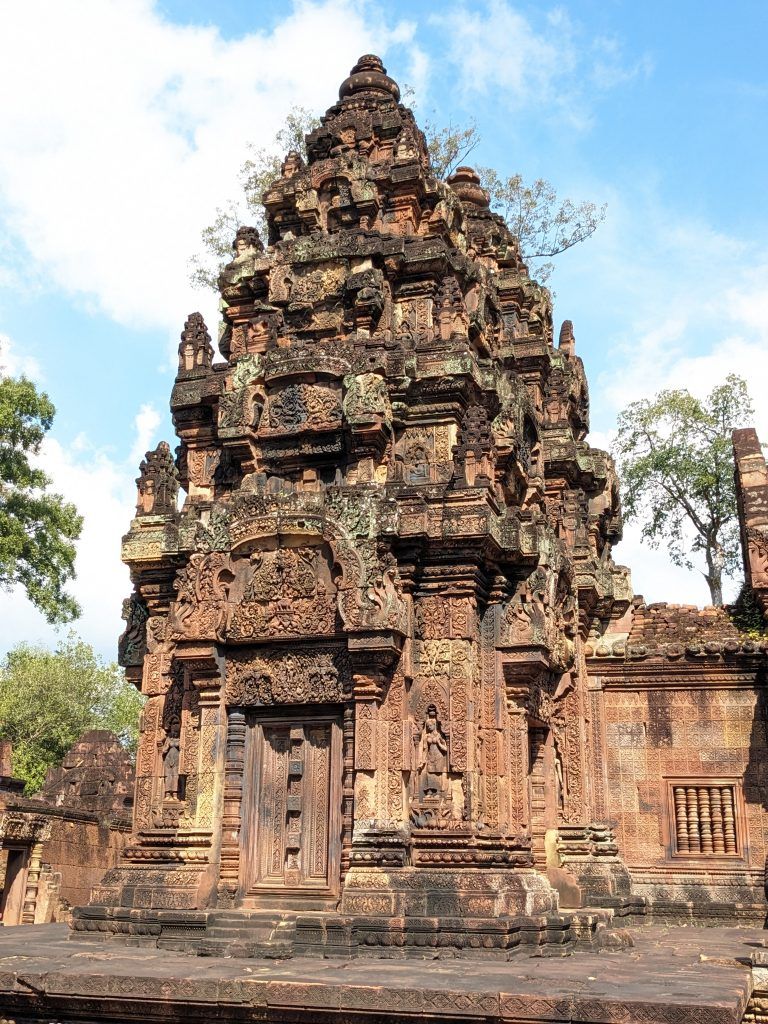

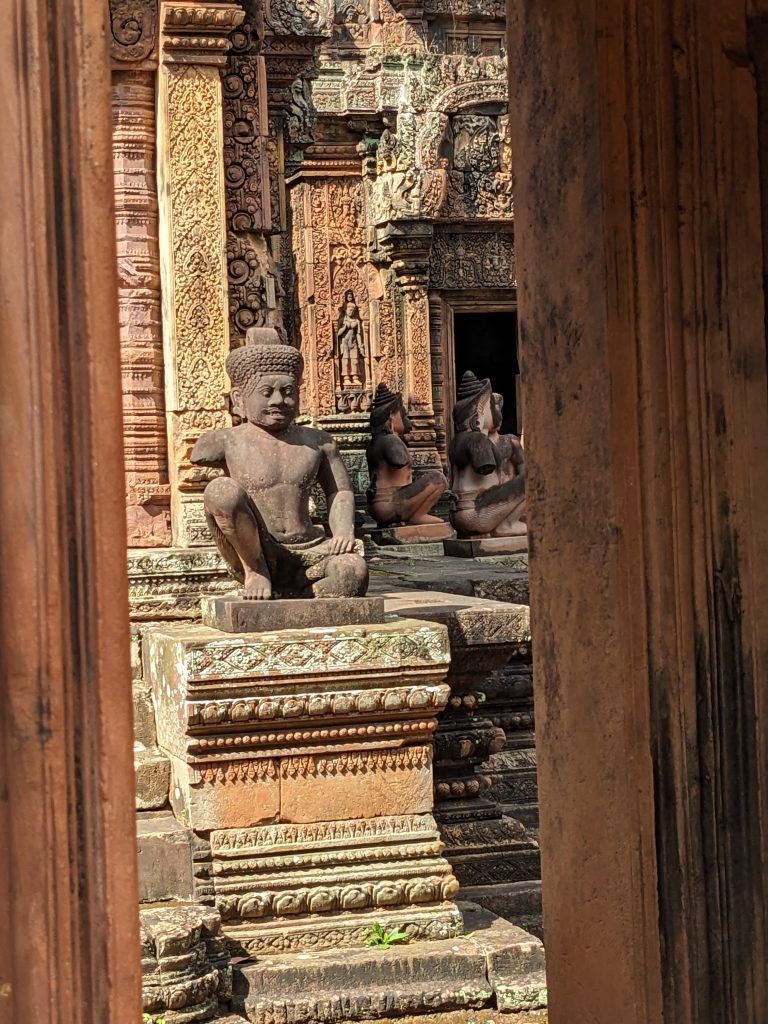
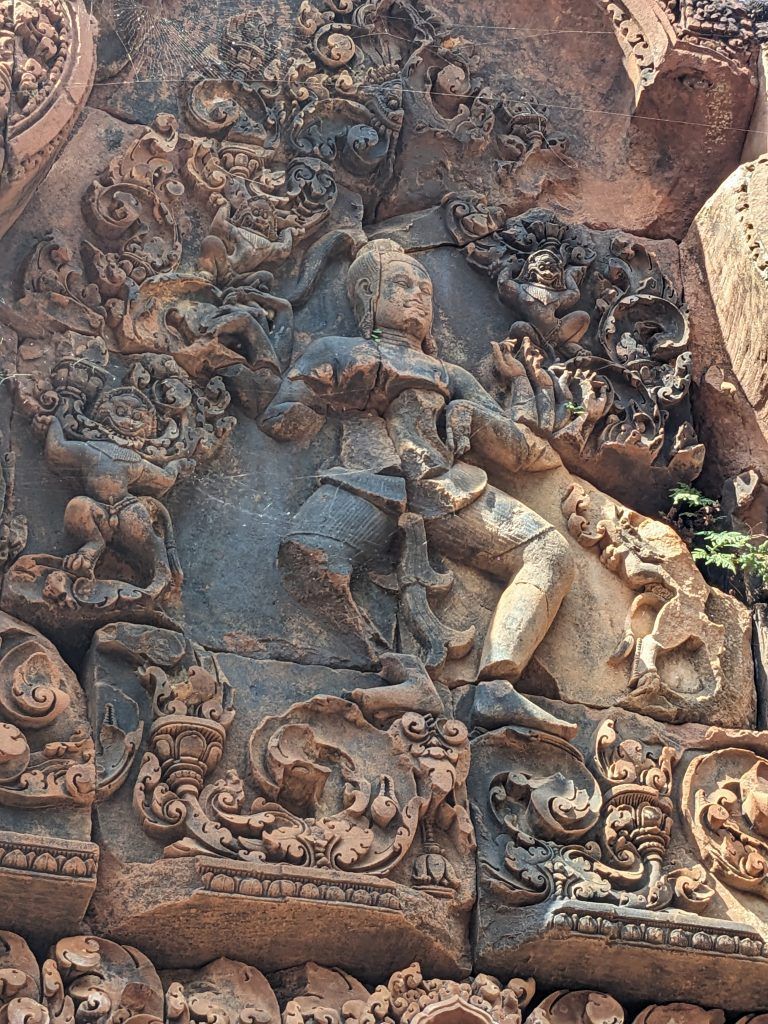



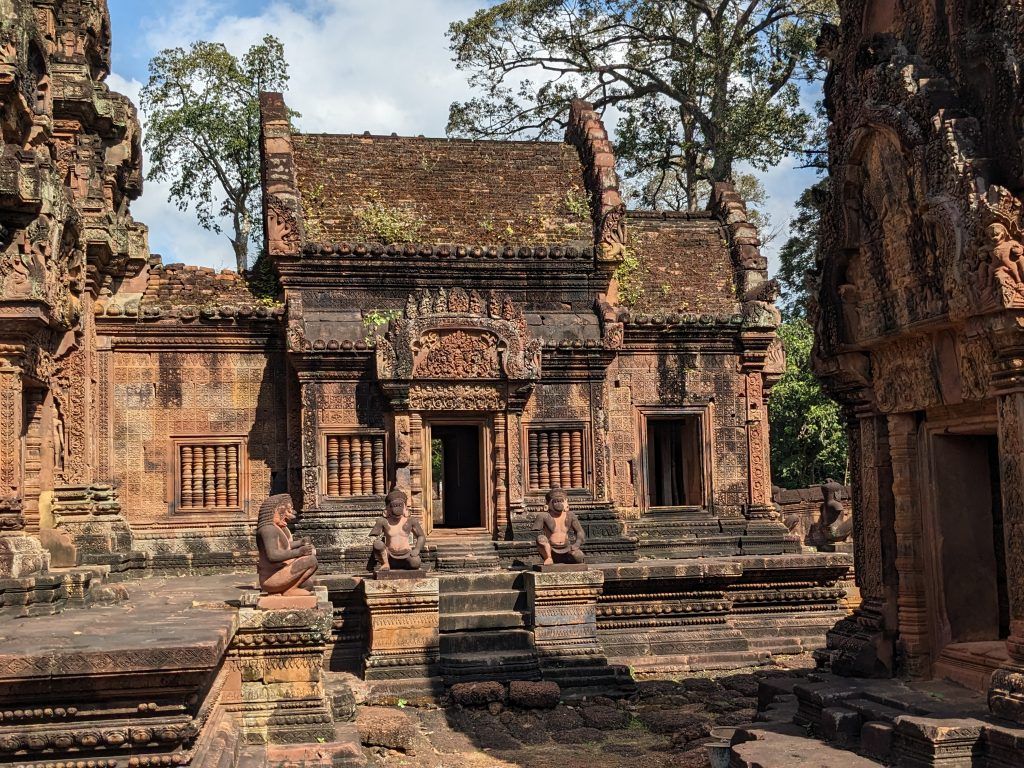
Bayon Temple
The most unique aspect of Bayon Temple is the beautiful facial carvings on and around the four gateways surrounding the temple.
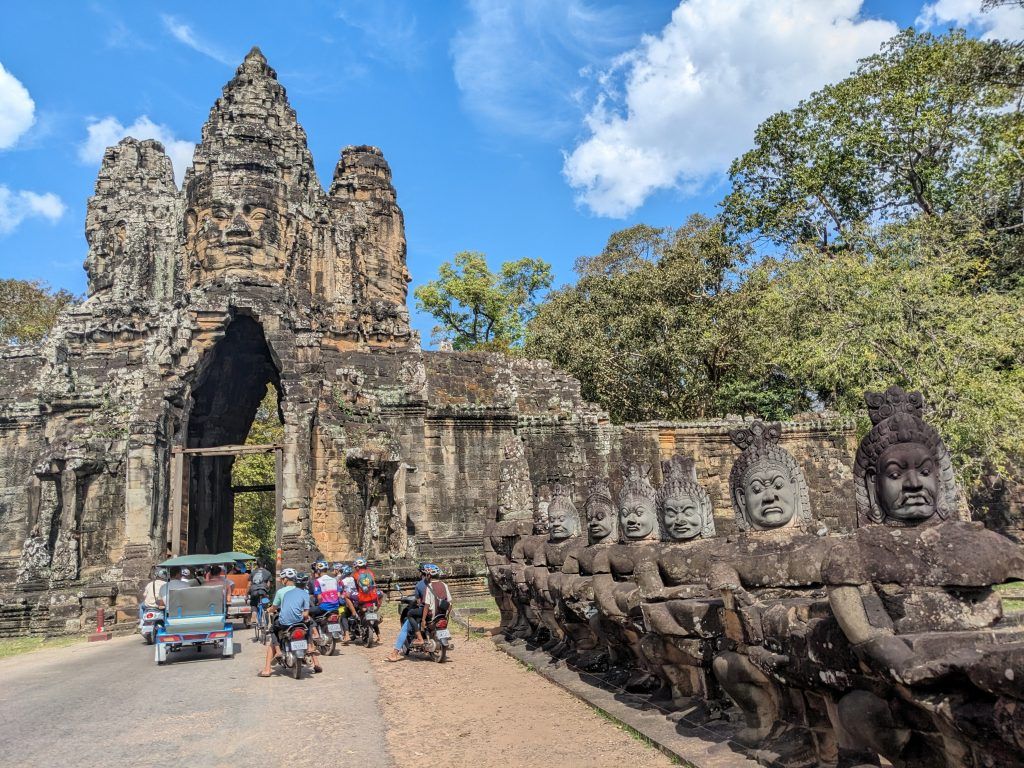
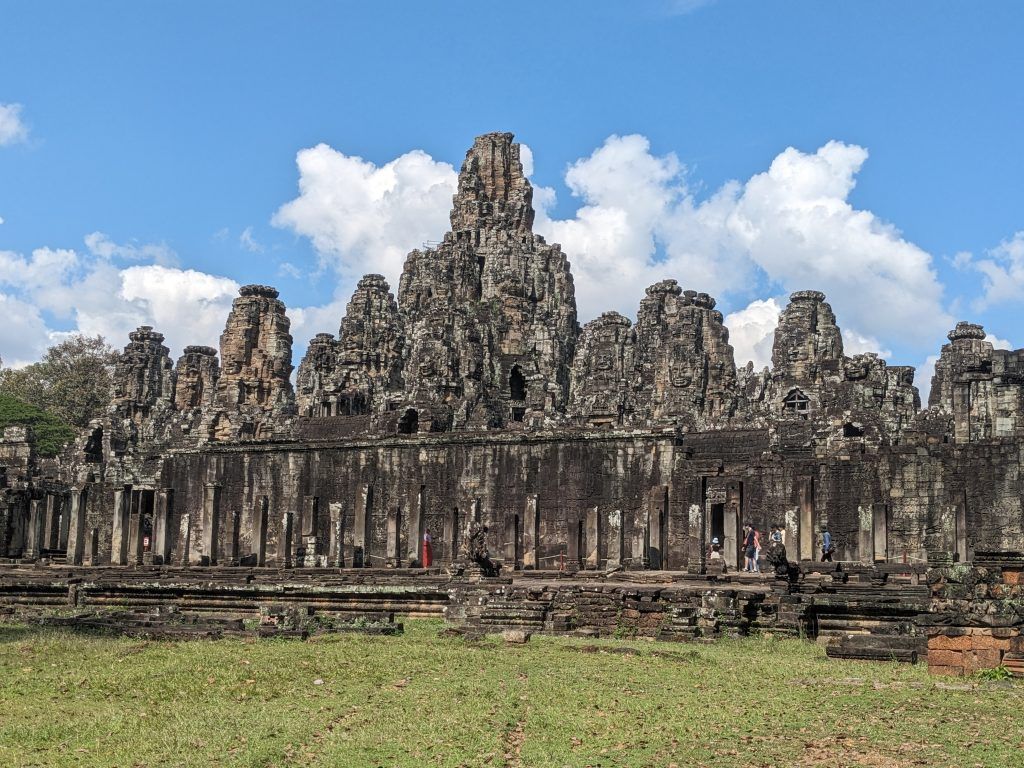

Ta Prohm Temple
Ta Prohm Temple was built without mortar and its known now for the magnificent trees that have taken root among the ruins. It’s also known for its depiction in the Lara Croft: Tomb Raider movie.
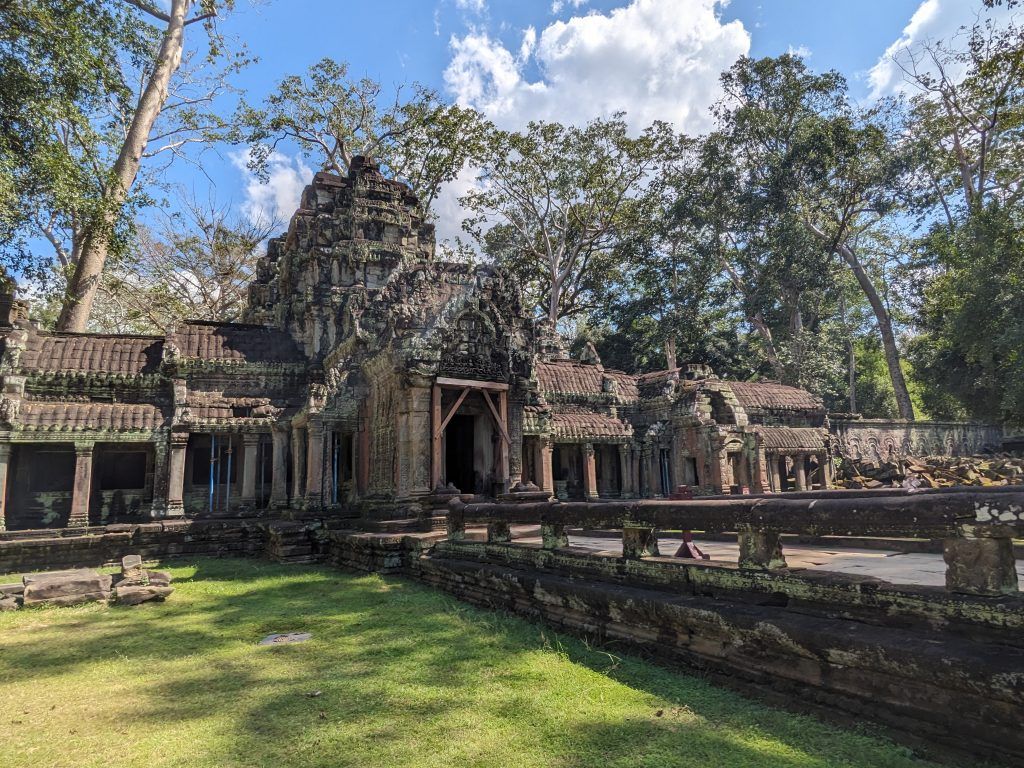


This is supposedly the primary tree depicted in the movie.
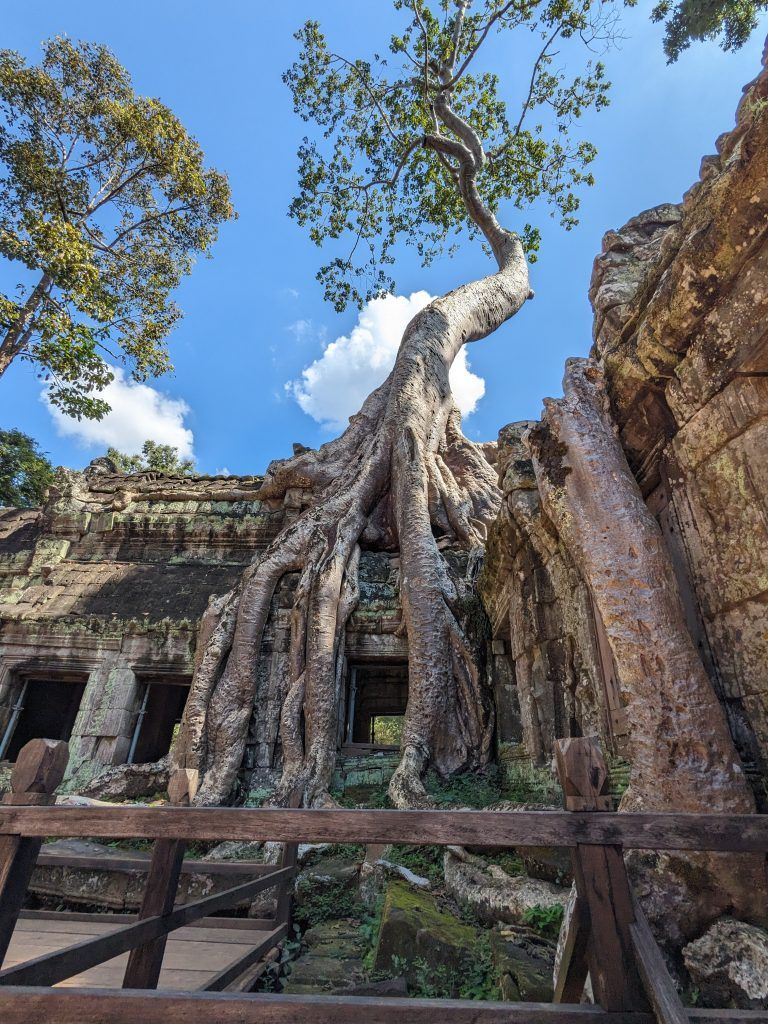

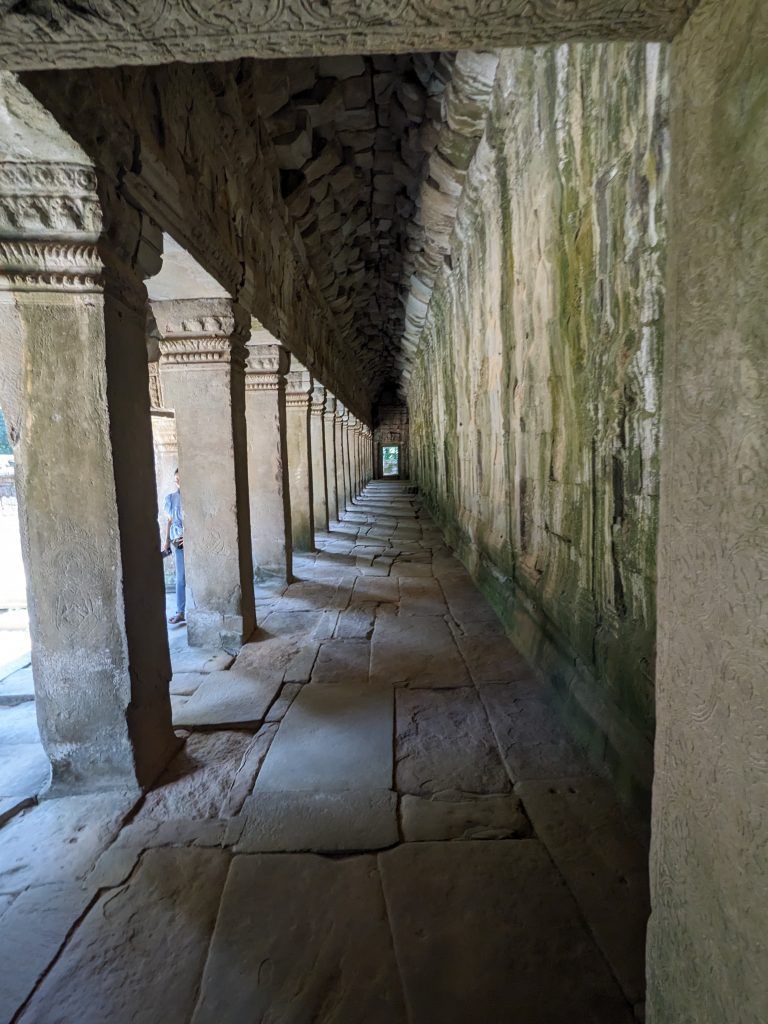
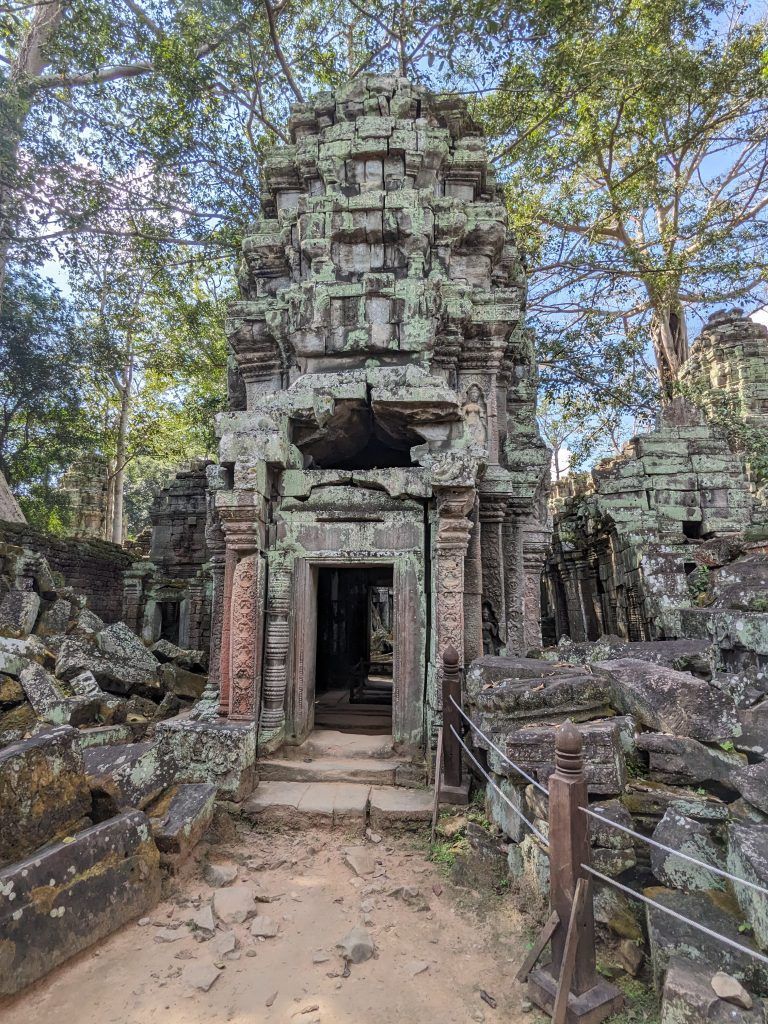
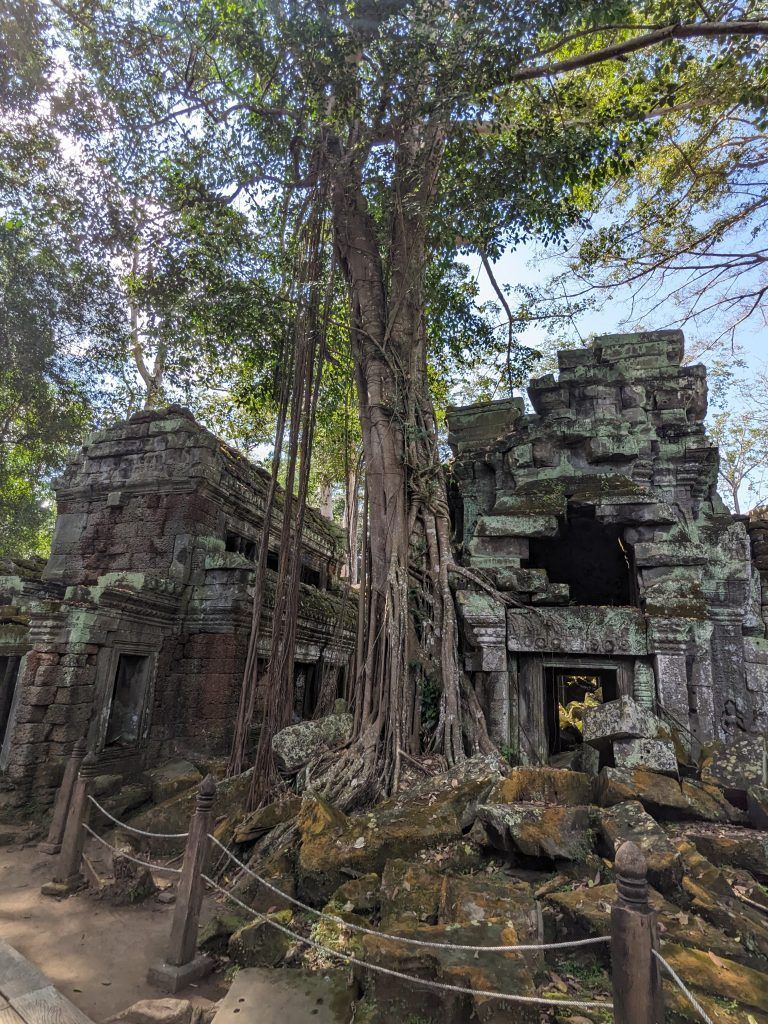
Preah Khan
Preah Khan is uncrowded and mostly unrestored, so walking around it feels as though you have your own private jungle ruins to escape to.
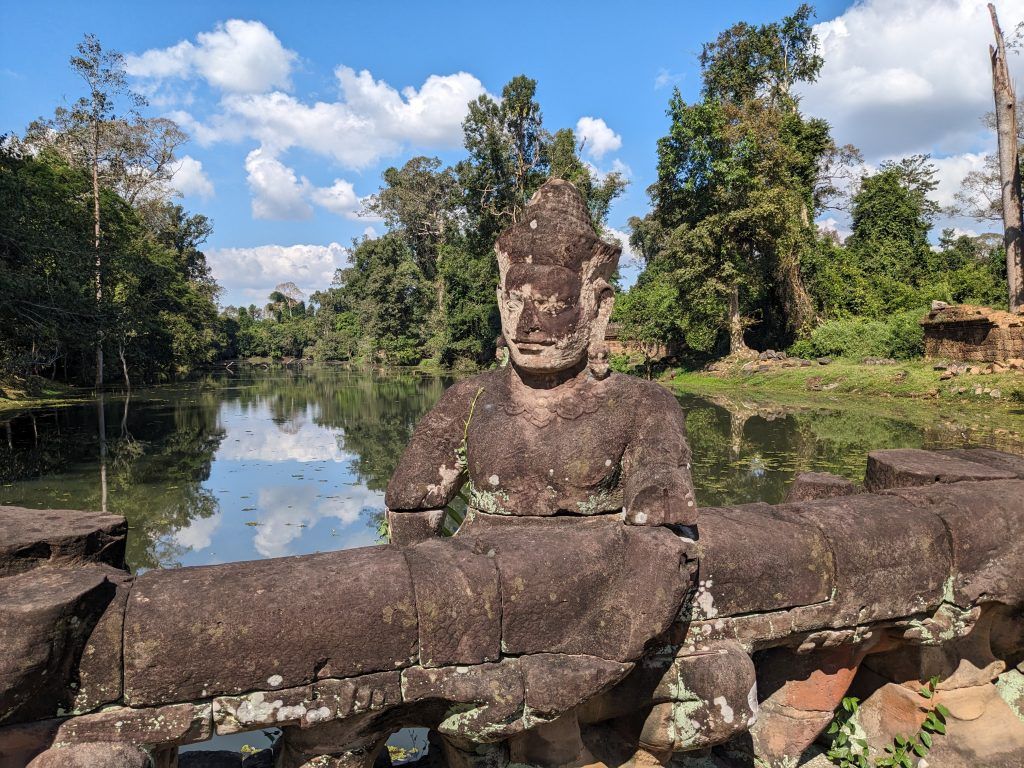
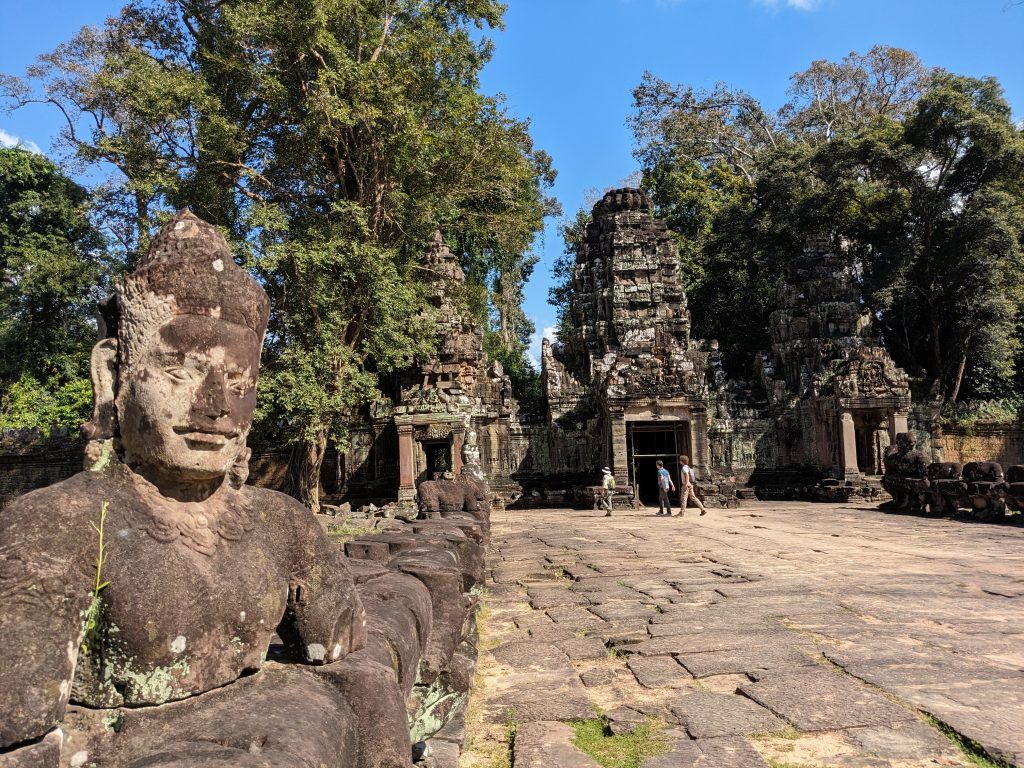
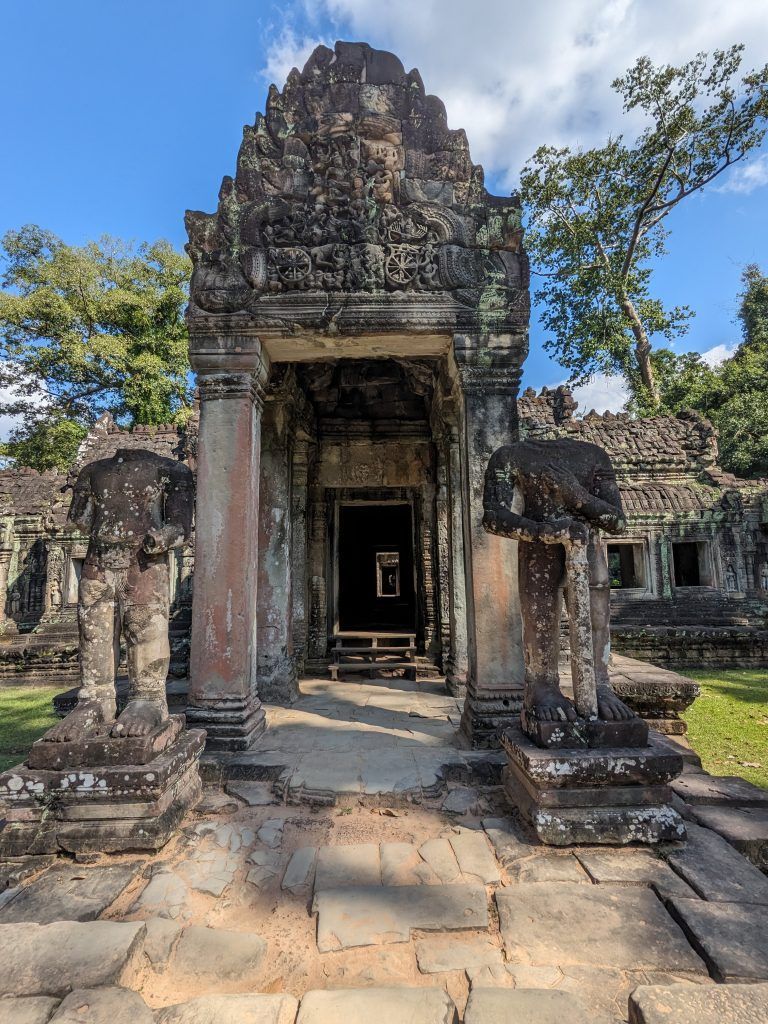
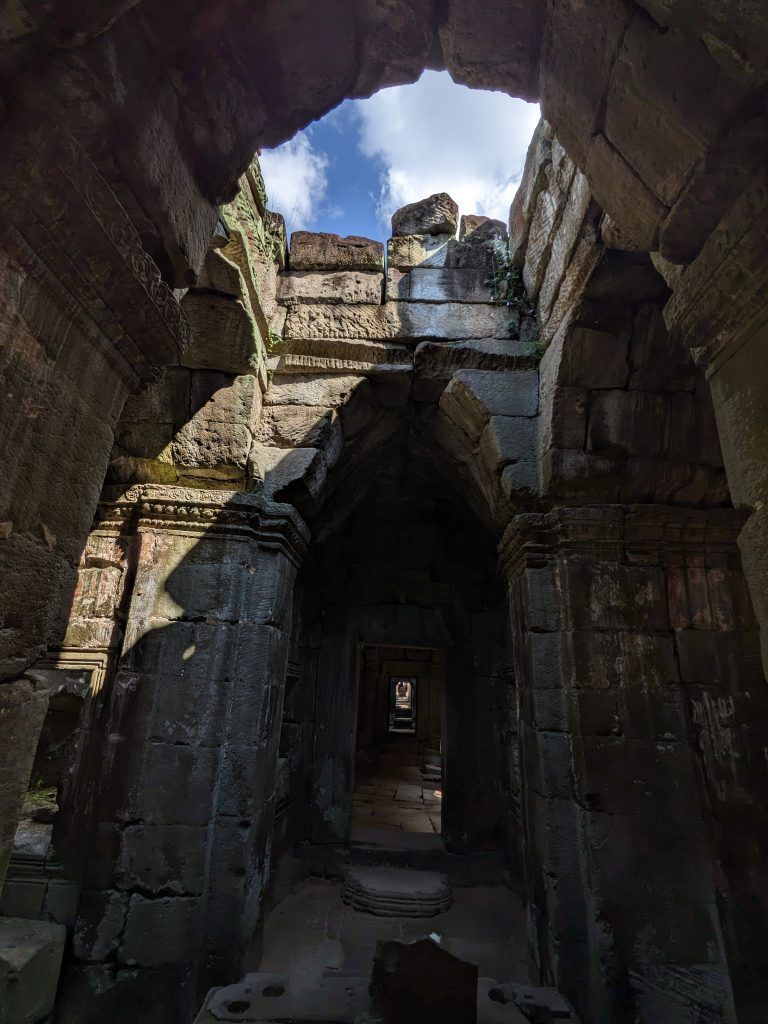
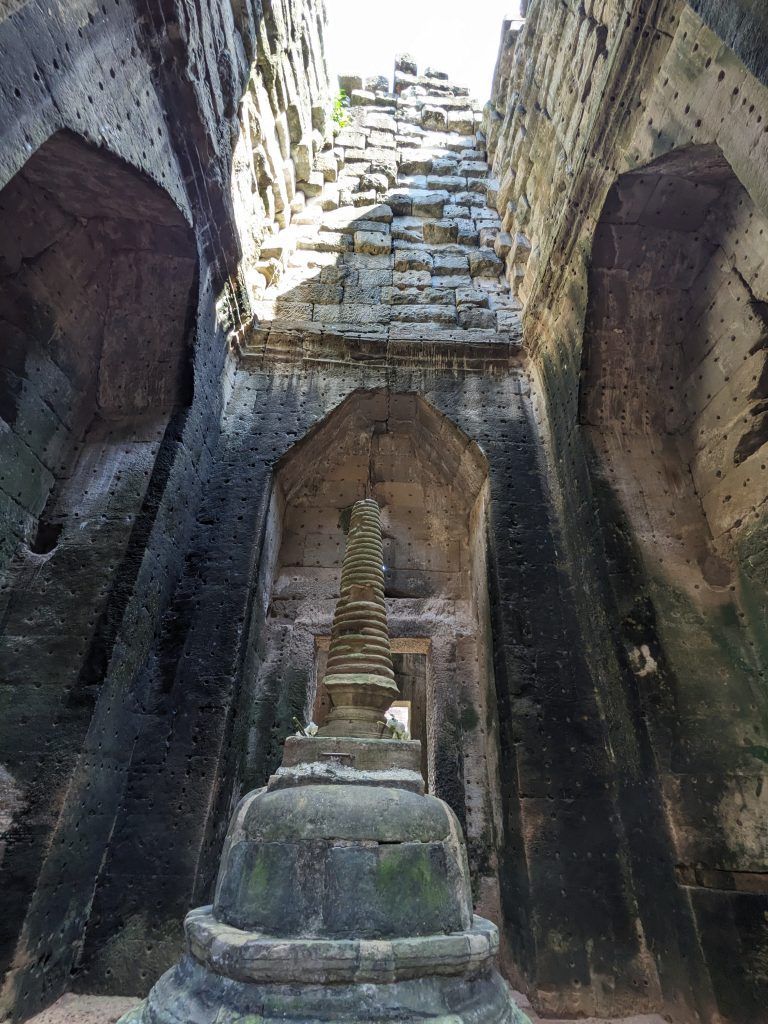
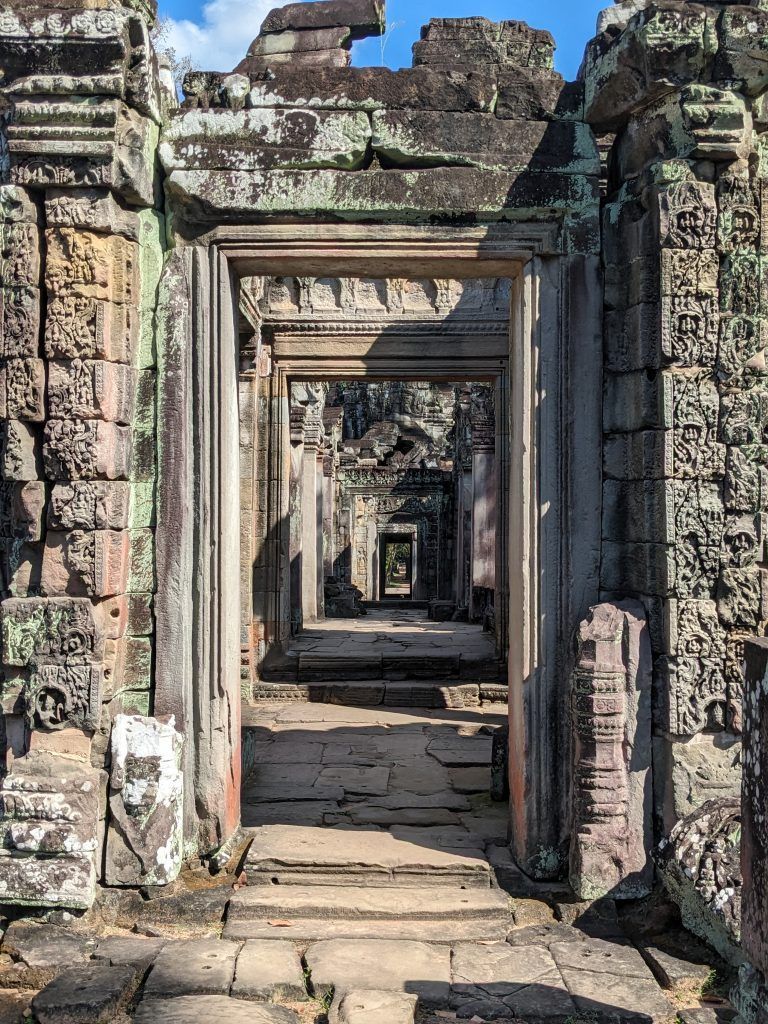
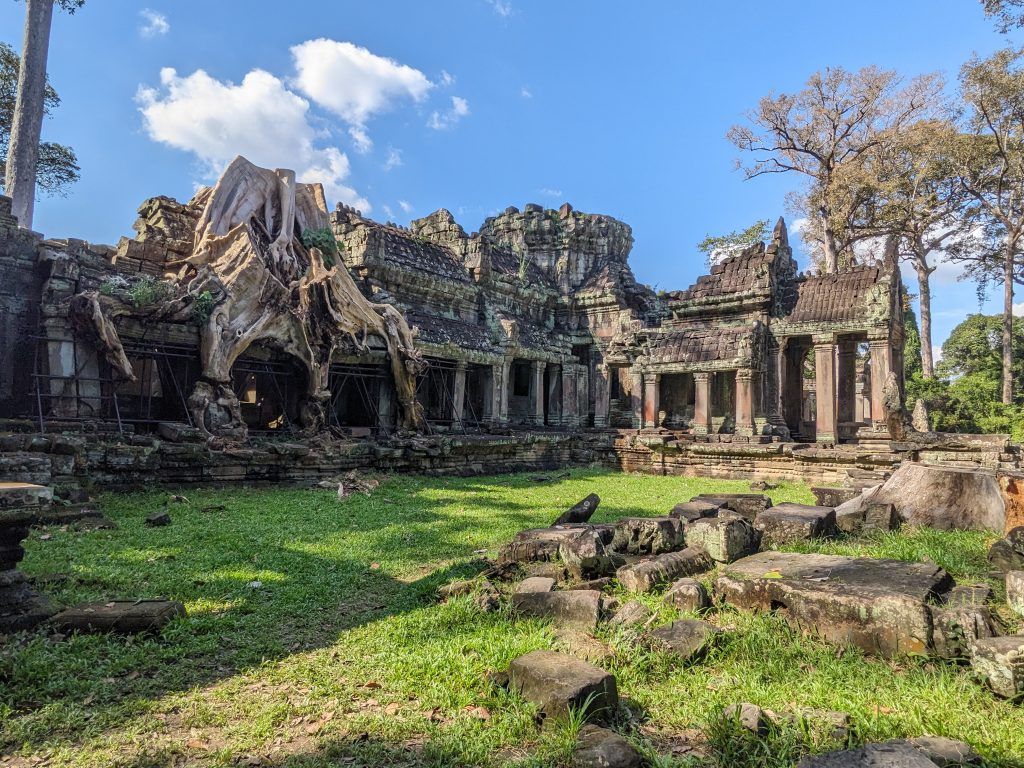
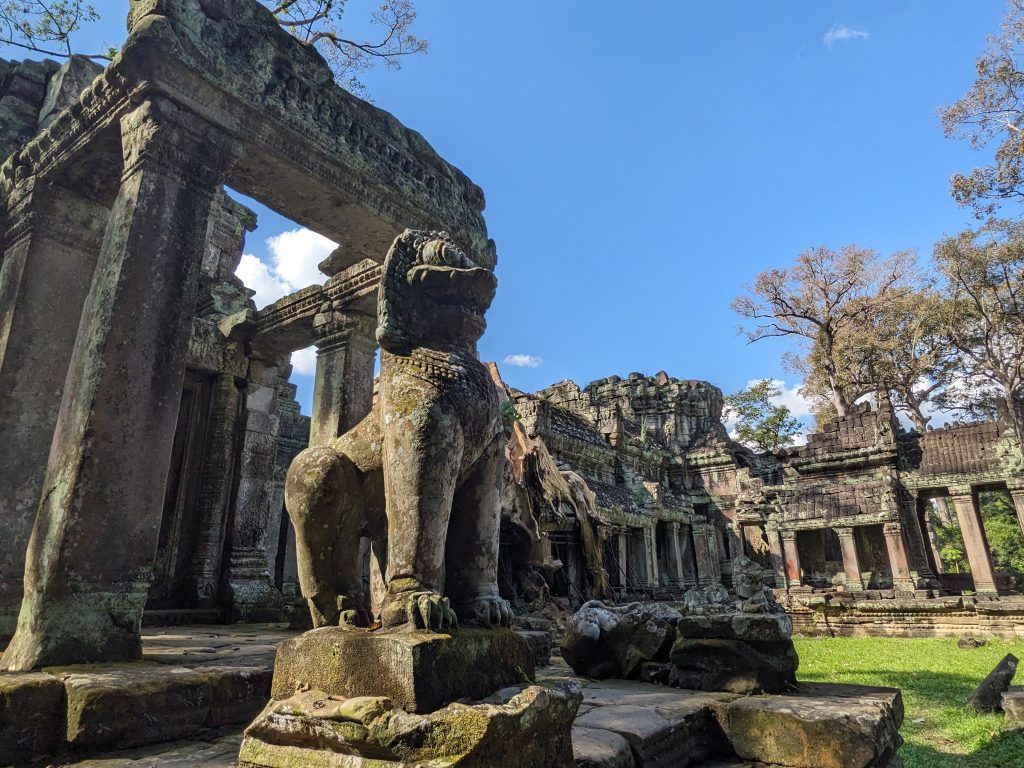
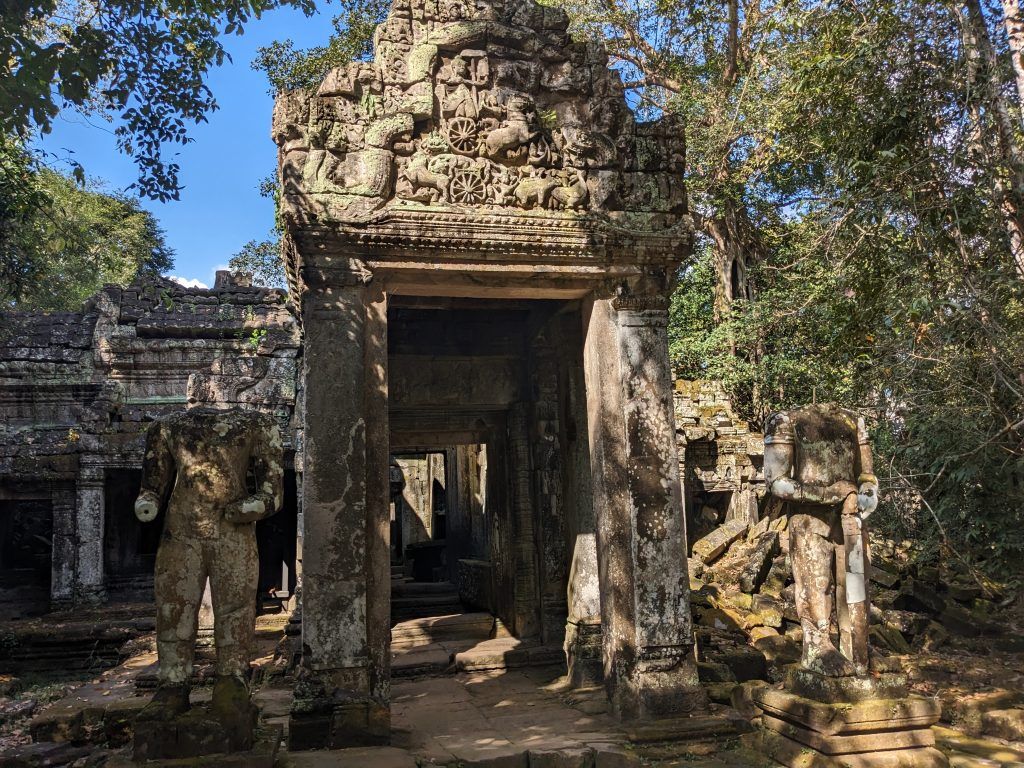
The eerily loud sounds of the cicadas make you feel as though the thousand year old ghosts of the ancient Khmer are calling to you.
Neak Poan
This is a small temple in the middle of a large pond. What makes it unique is that it is built on an artificial island in the middle of a huge shallow lake.
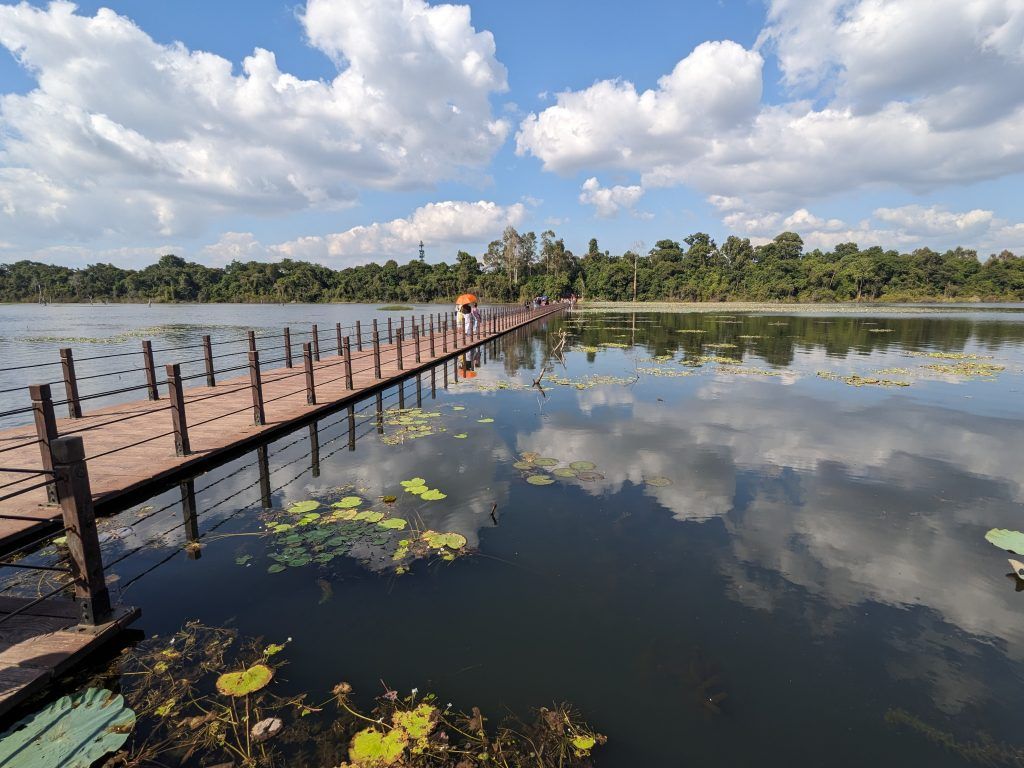
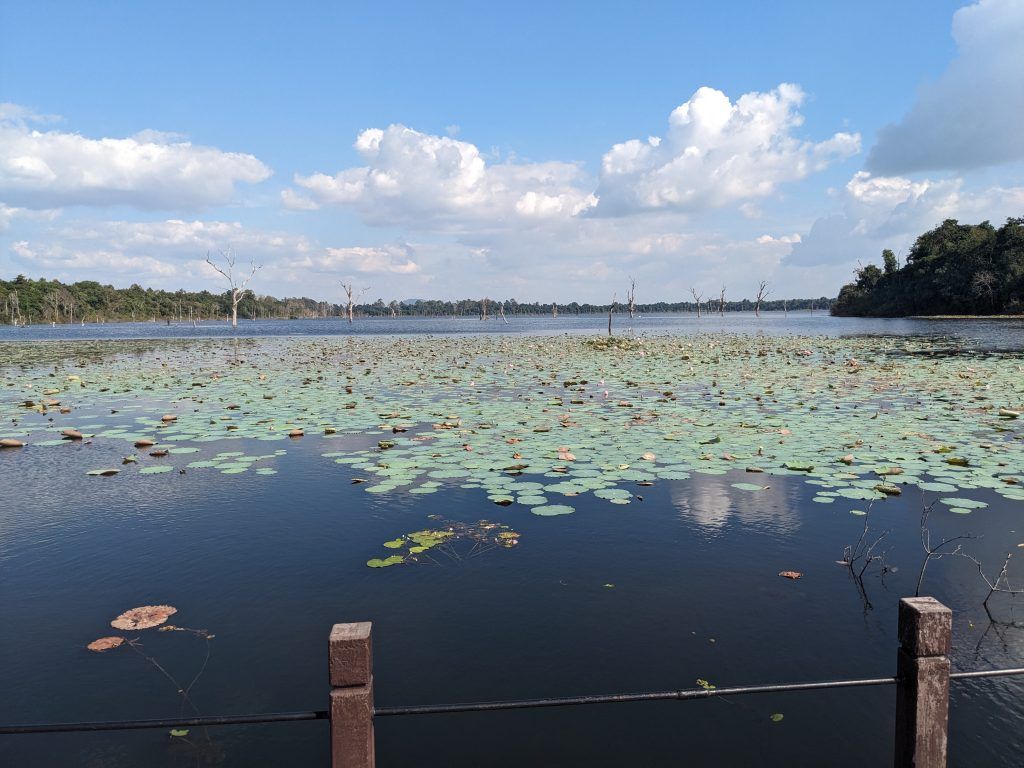
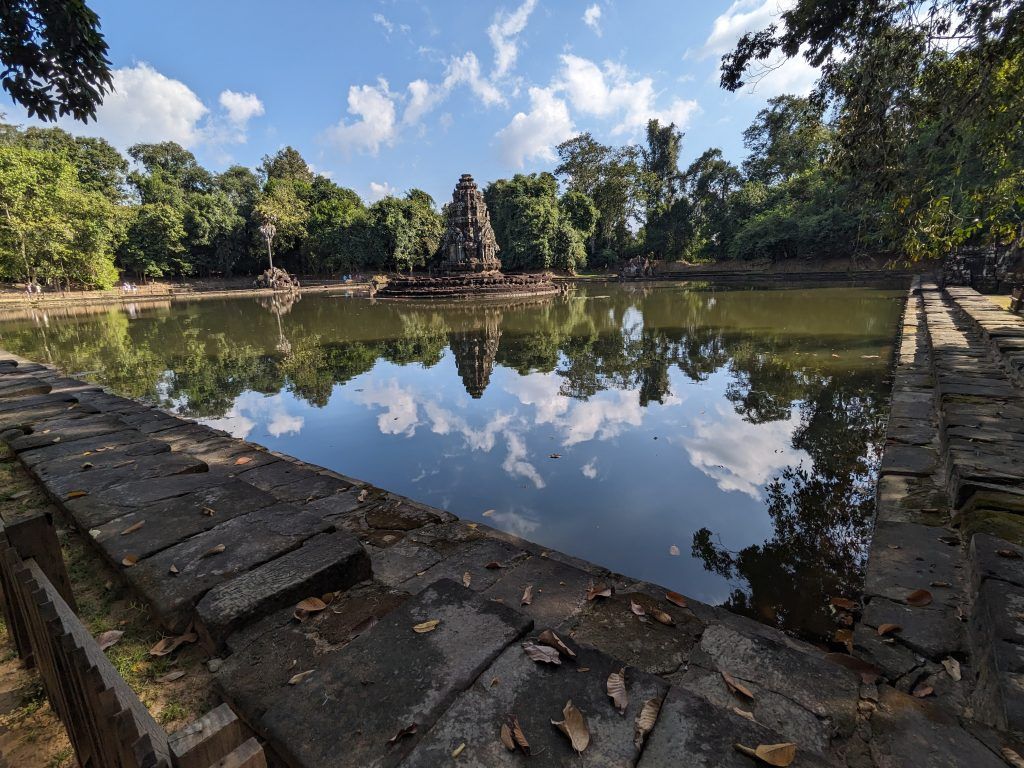
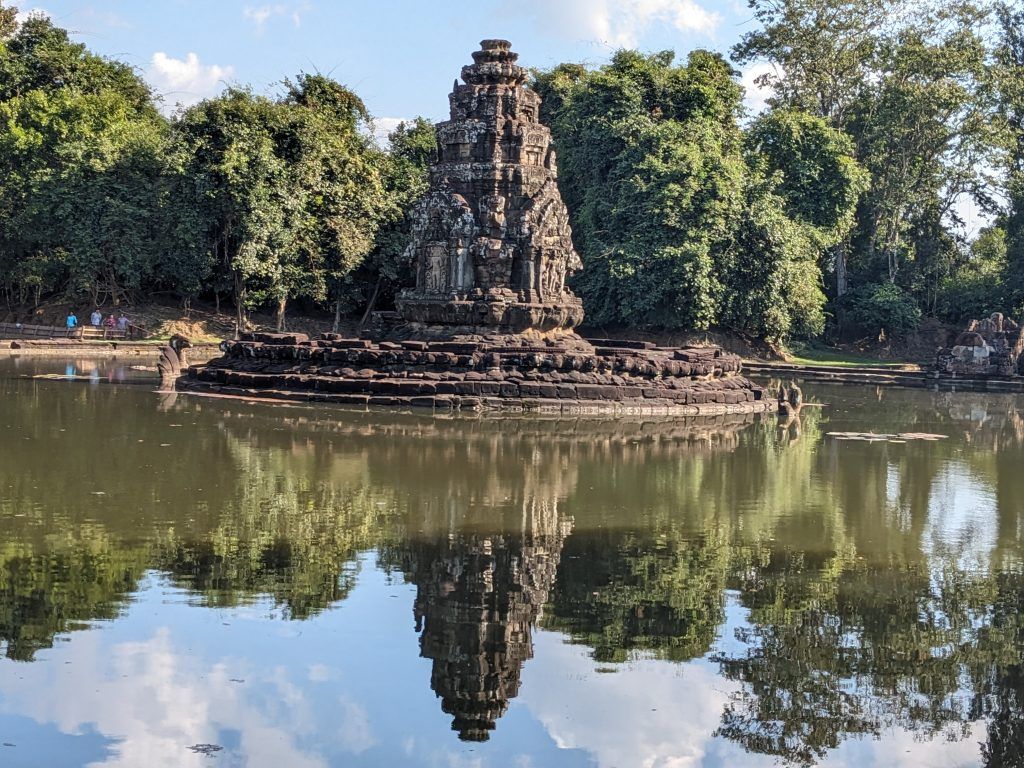
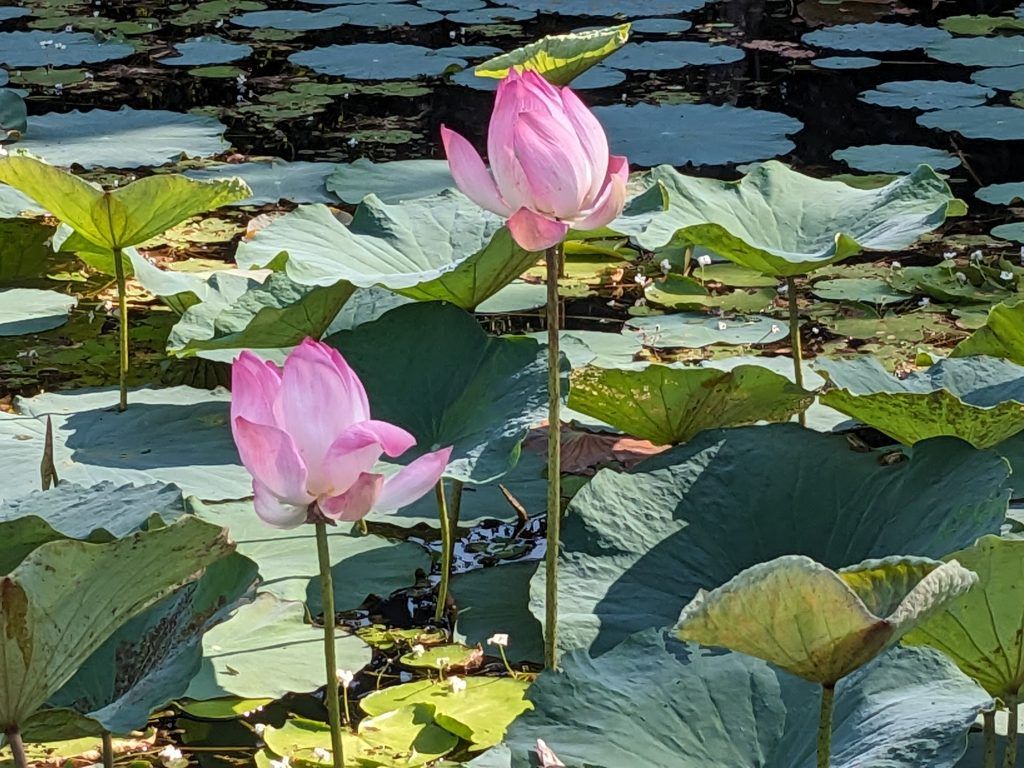
Ta Som
Ta Som is a small, uncrowded temple with its own unique atmosphere.
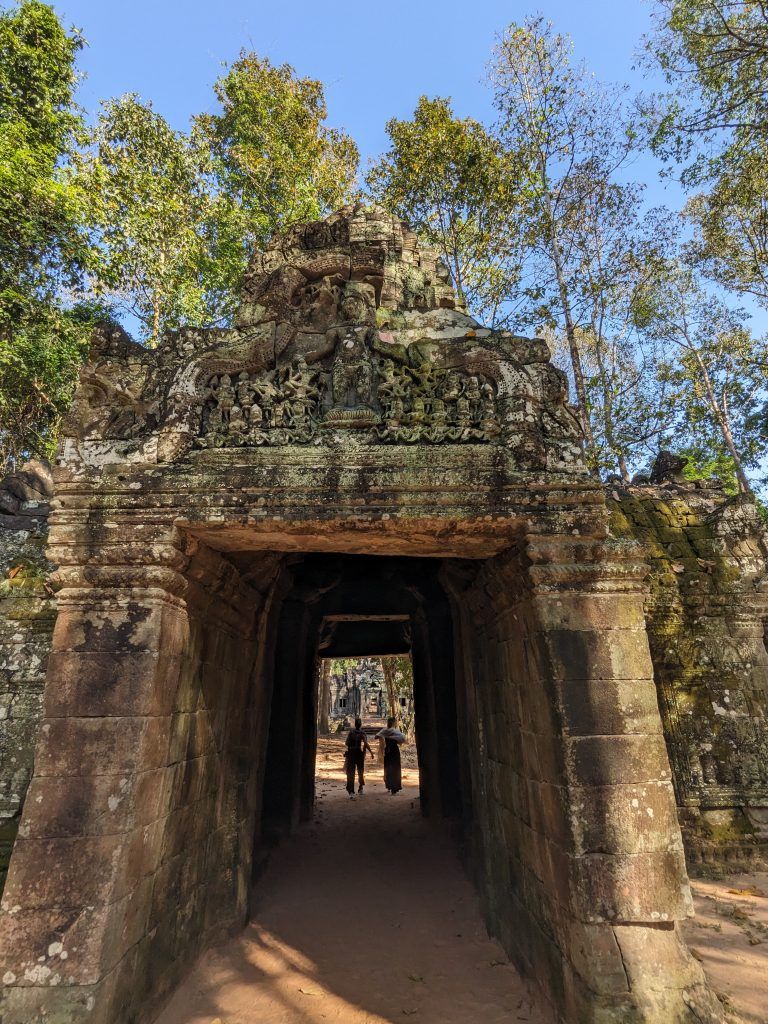
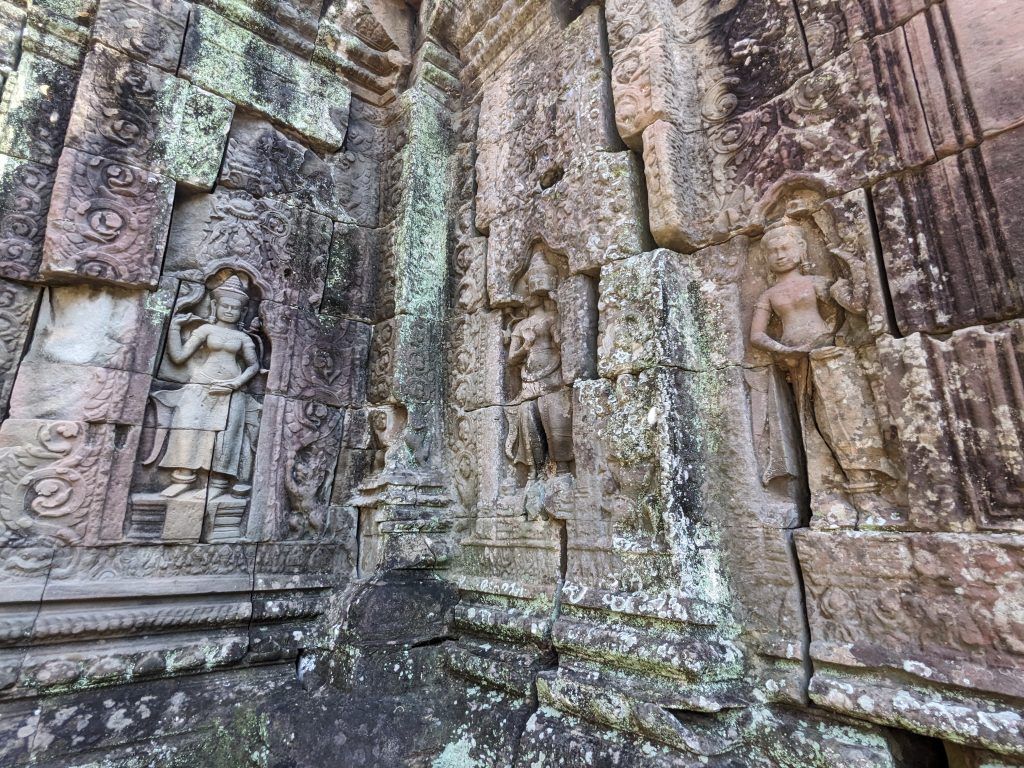
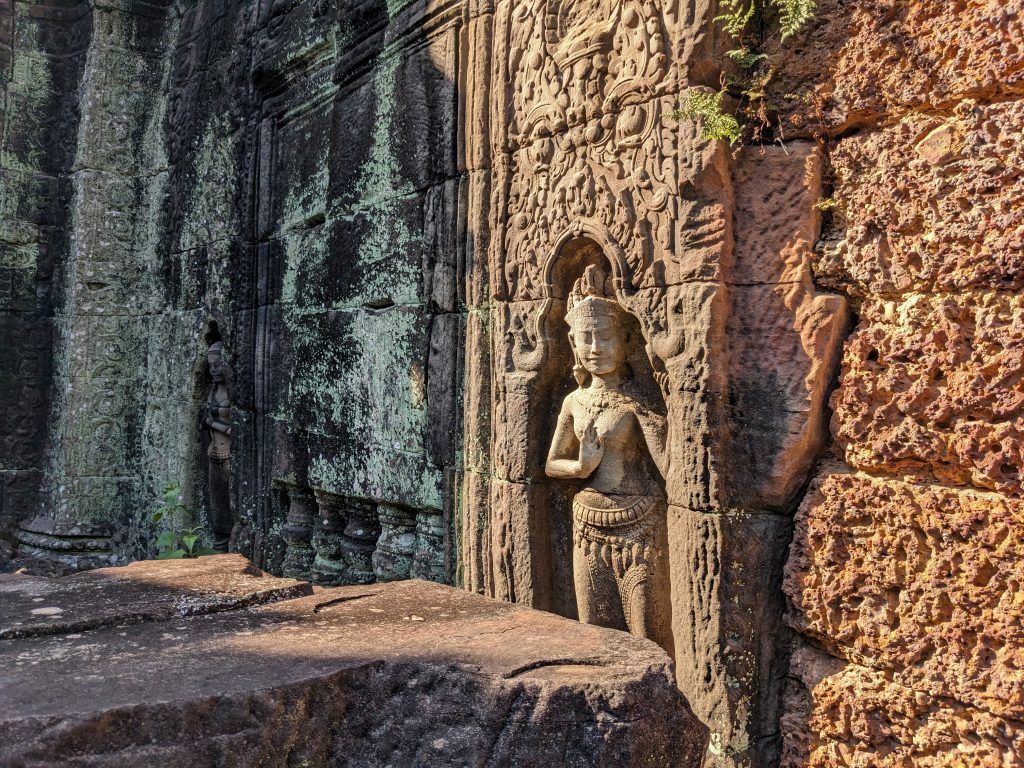

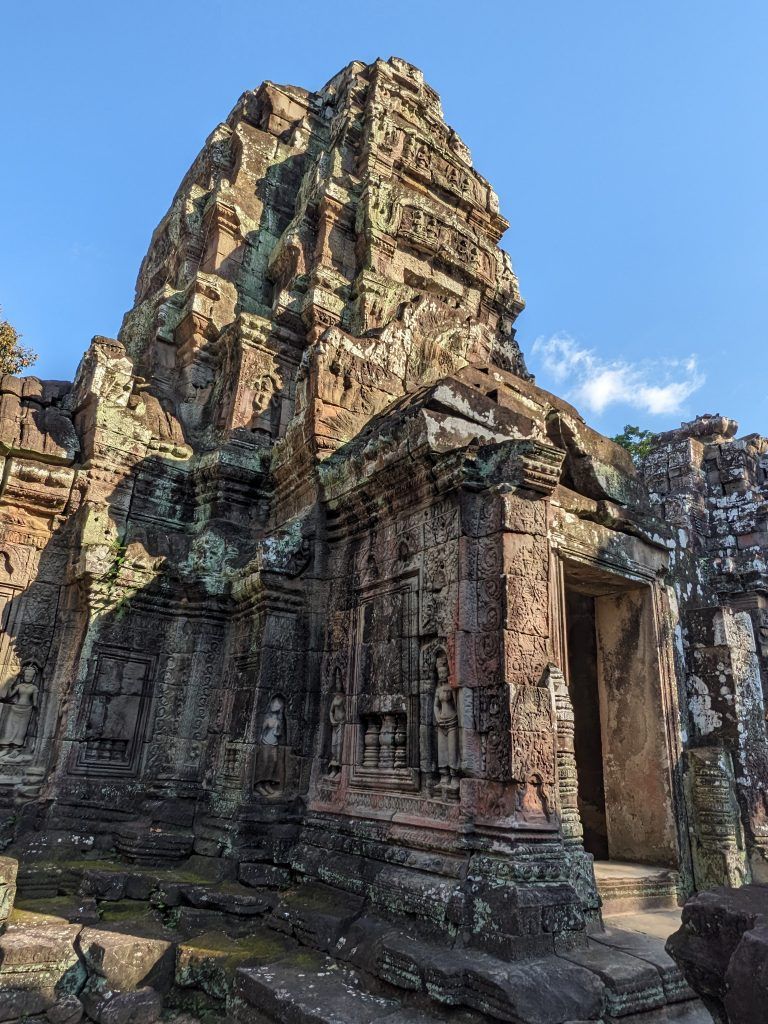
Pre Rup Temple
As I was finishing my second day touring the temples and starting to head back to the city on my scooter, I rounded a turn and saw a beautiful red sandstone temple where people were scampering on the top. I couldn’t pass up the chance to climb up one last temple.
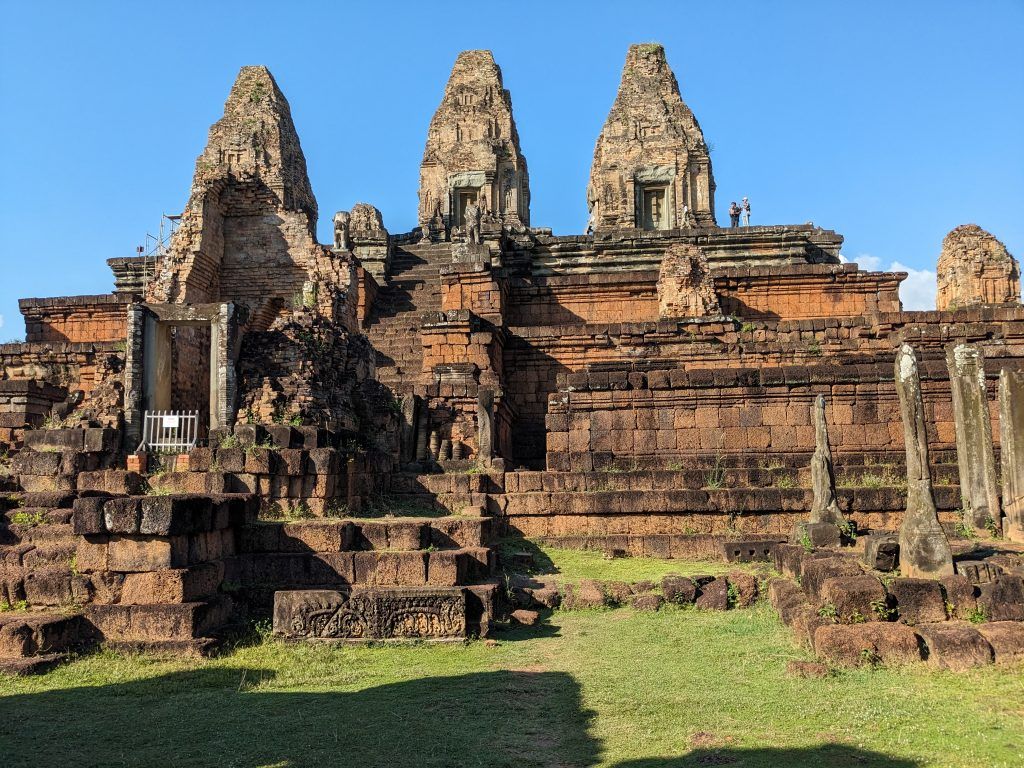
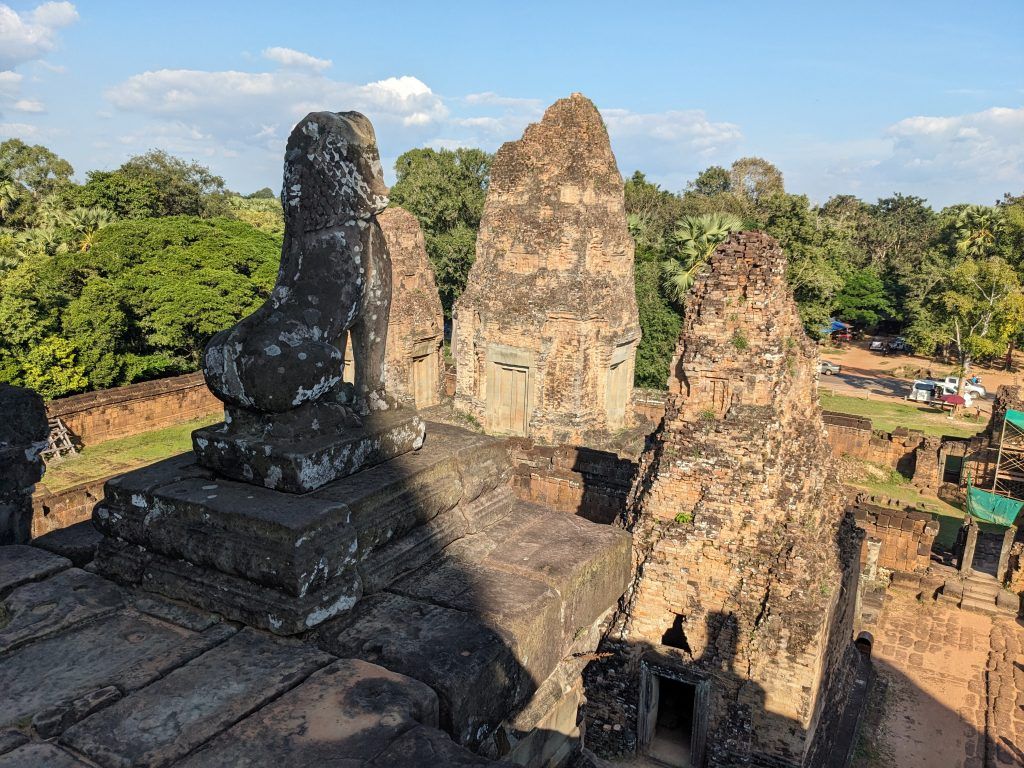
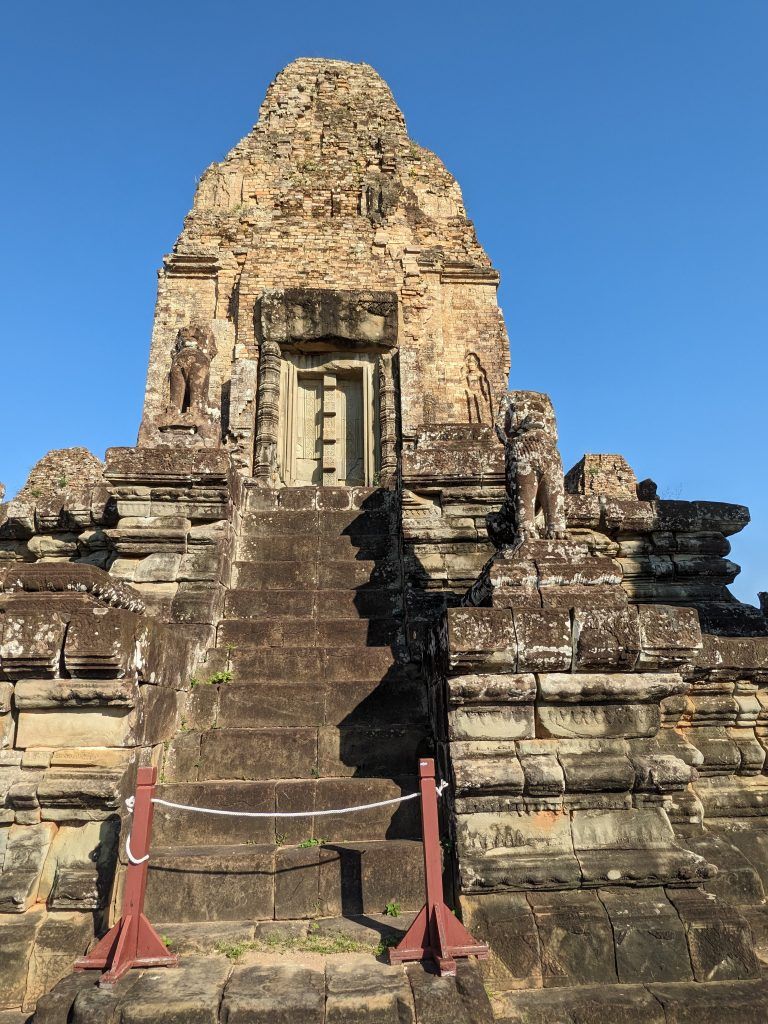
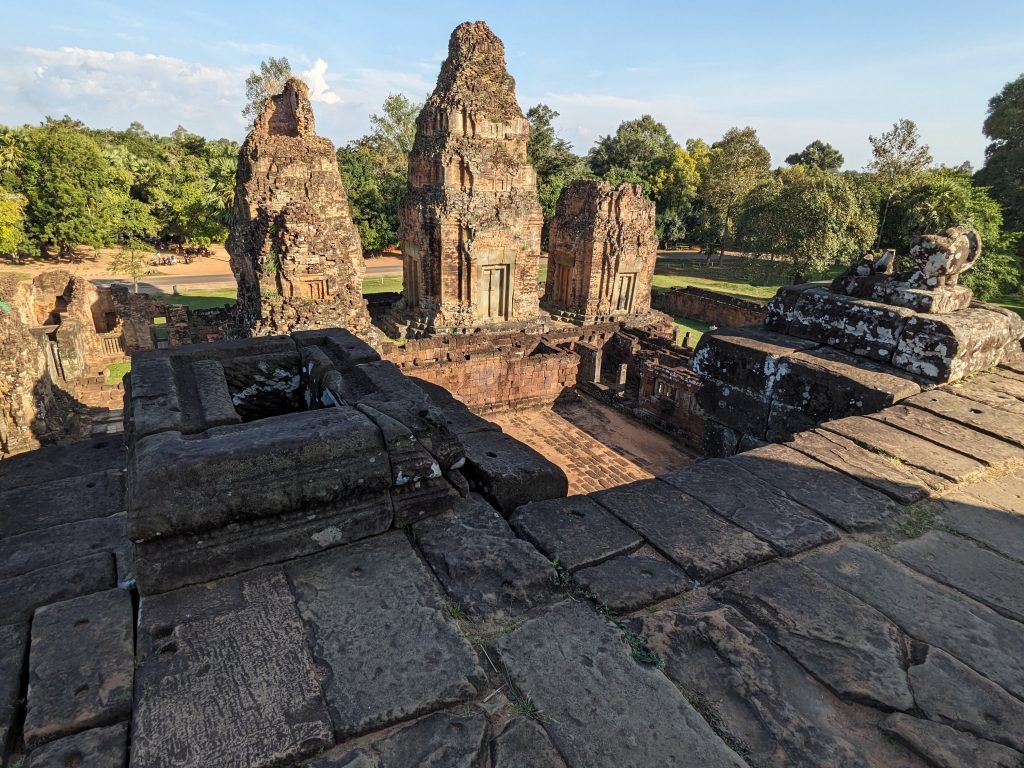
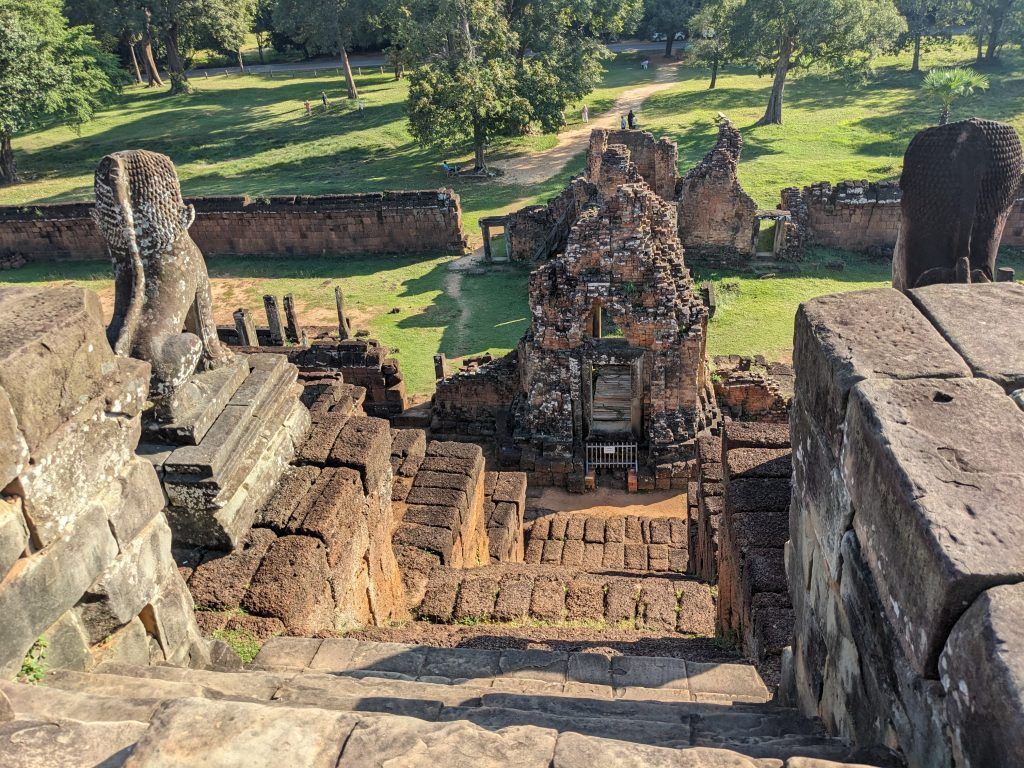
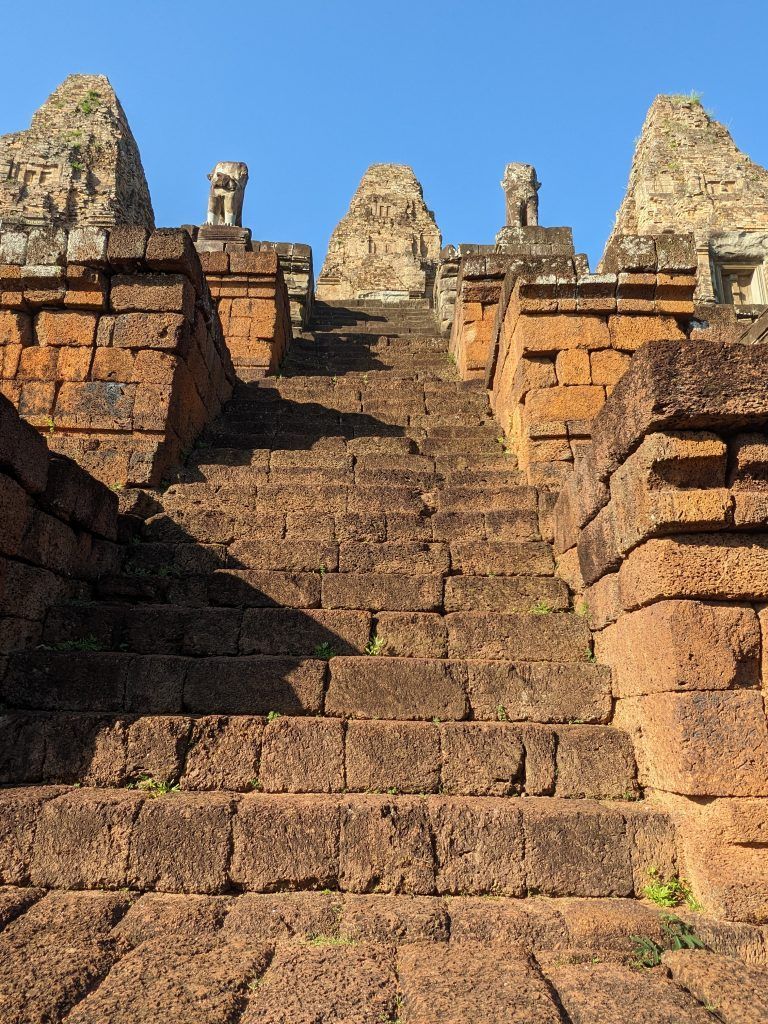
Angkor National Museum
This museum has a nice selection of Angkor art and includes extensive explanations of the history and religious background of the Khmer Empire.
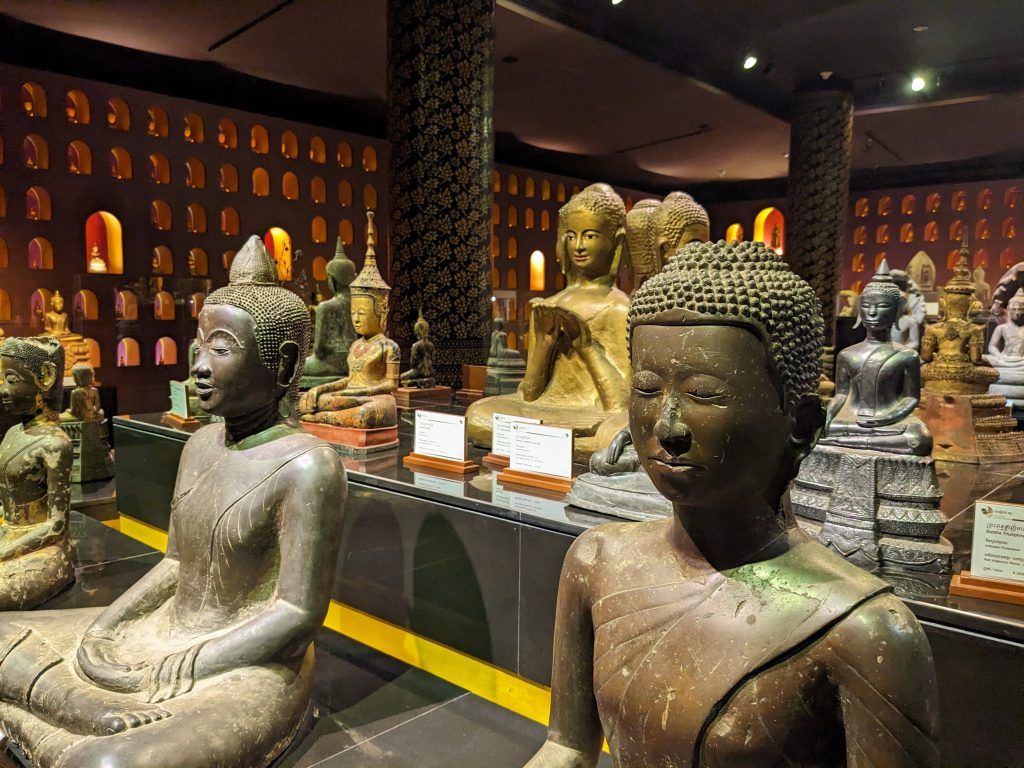
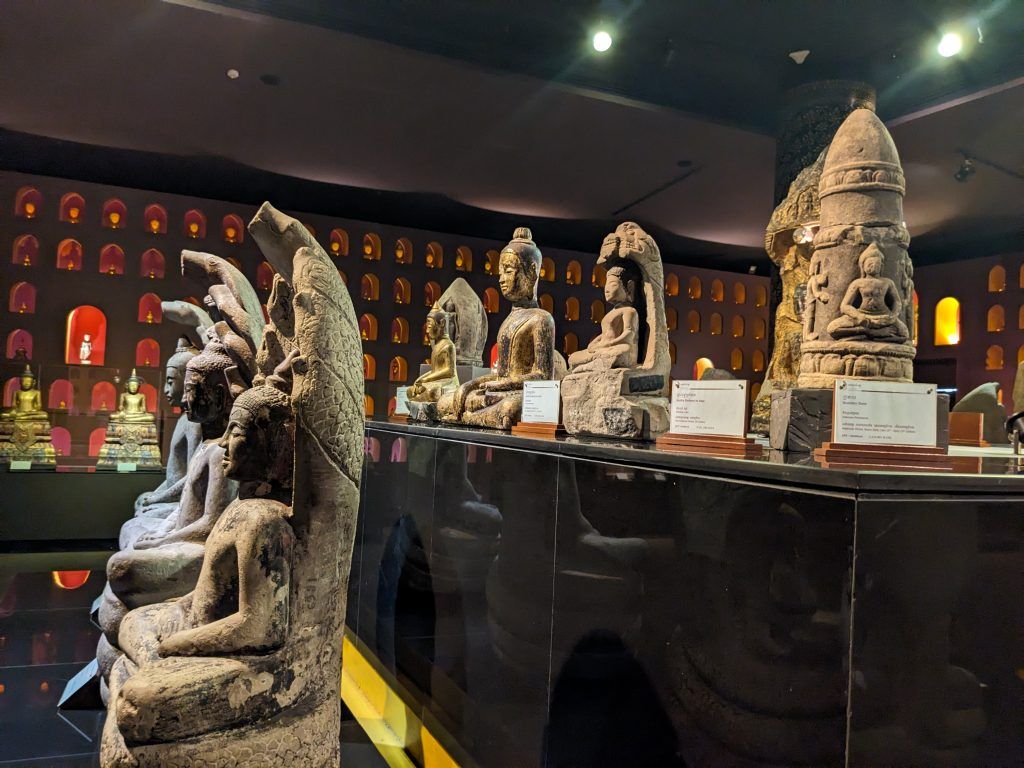
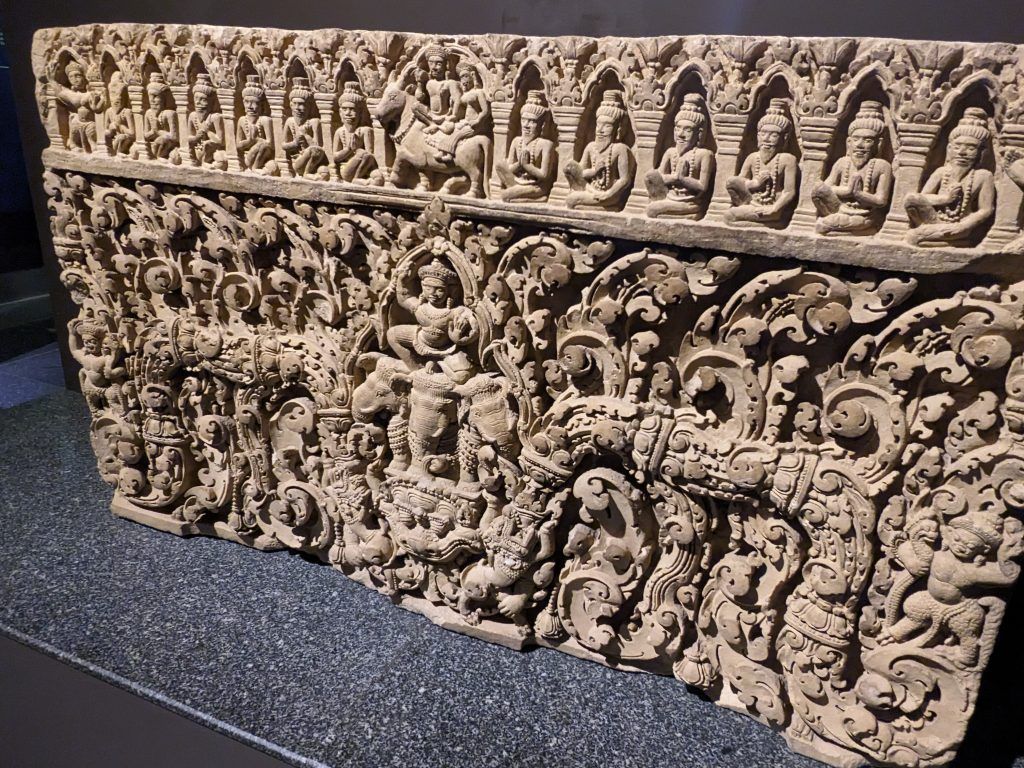
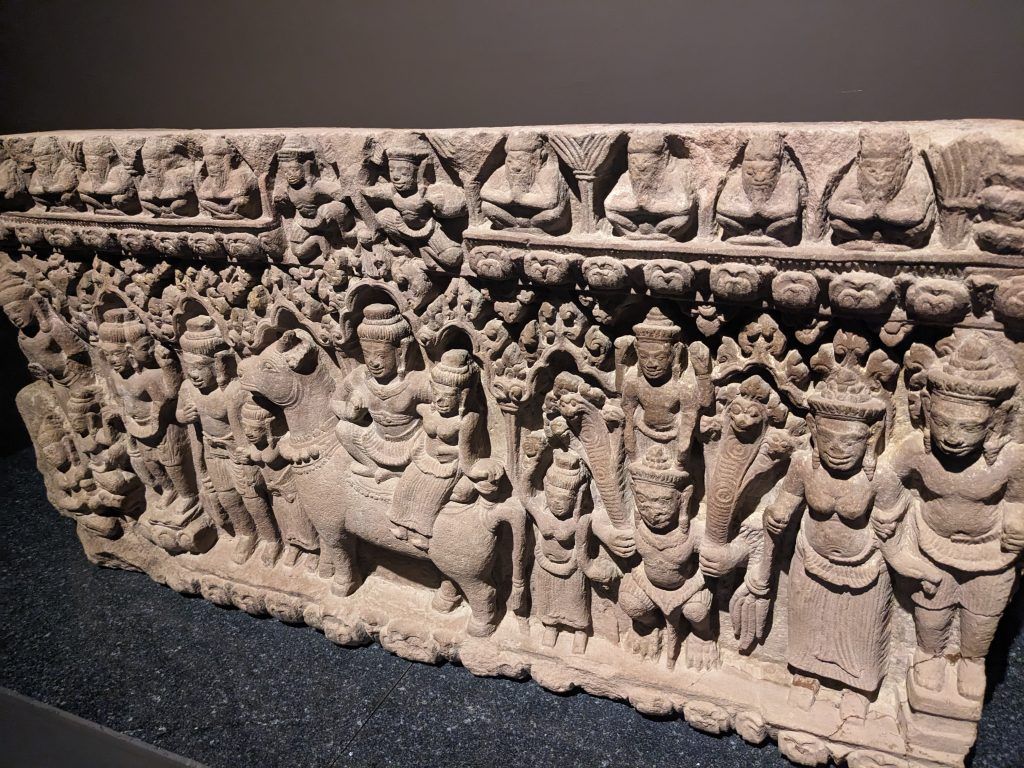
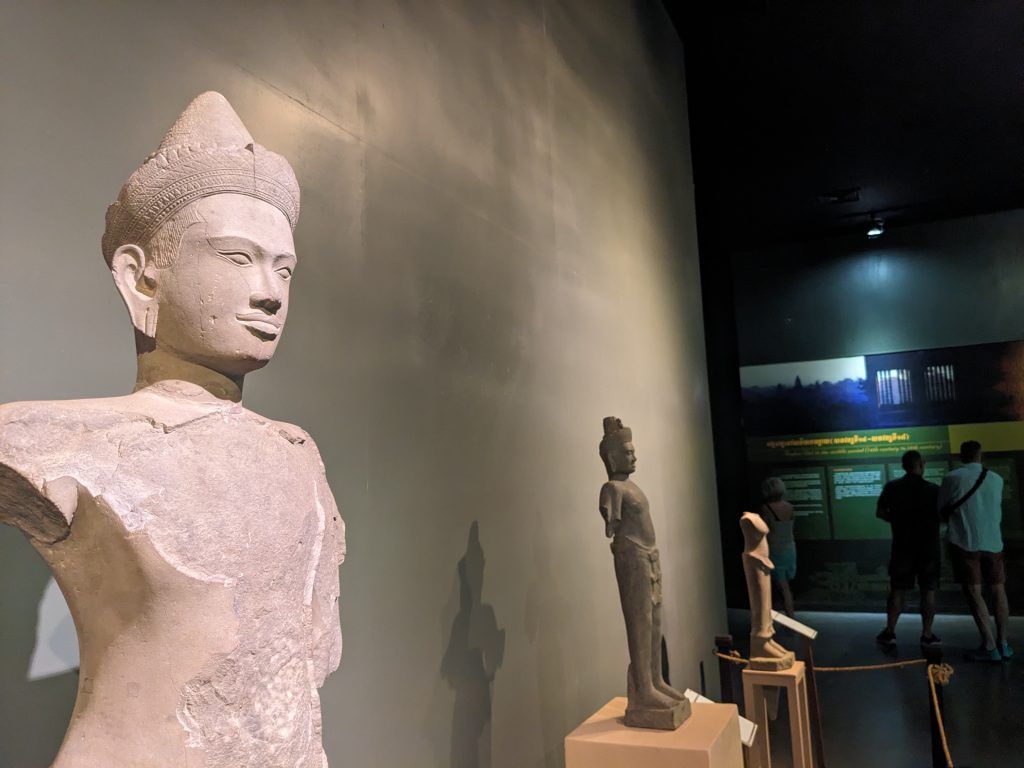

Cambodia Landmine Museum
As with neighboring Laos, landmines are a huge problem in Cambodia. The vast majority were from the American bombings during the Vietnam War. Unfortunately, some were also self-inflected during the country’s subsequent struggles.
As you can read below, Aki Ra, the founder of this musuem, has a tragic, yet amazing story.

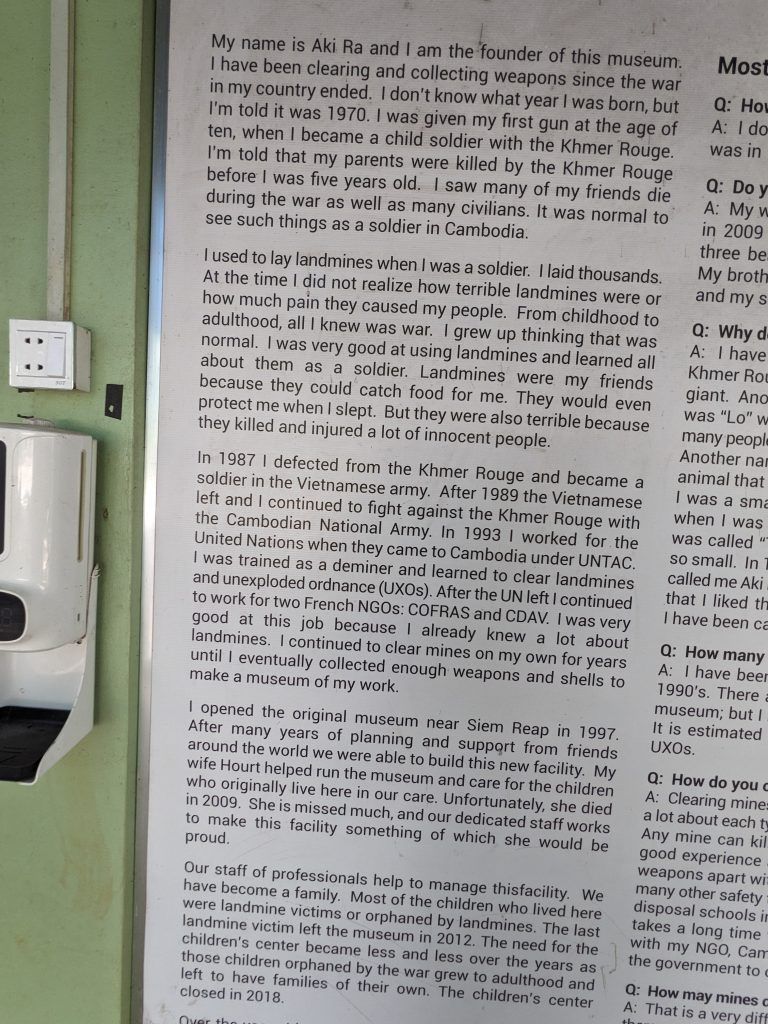
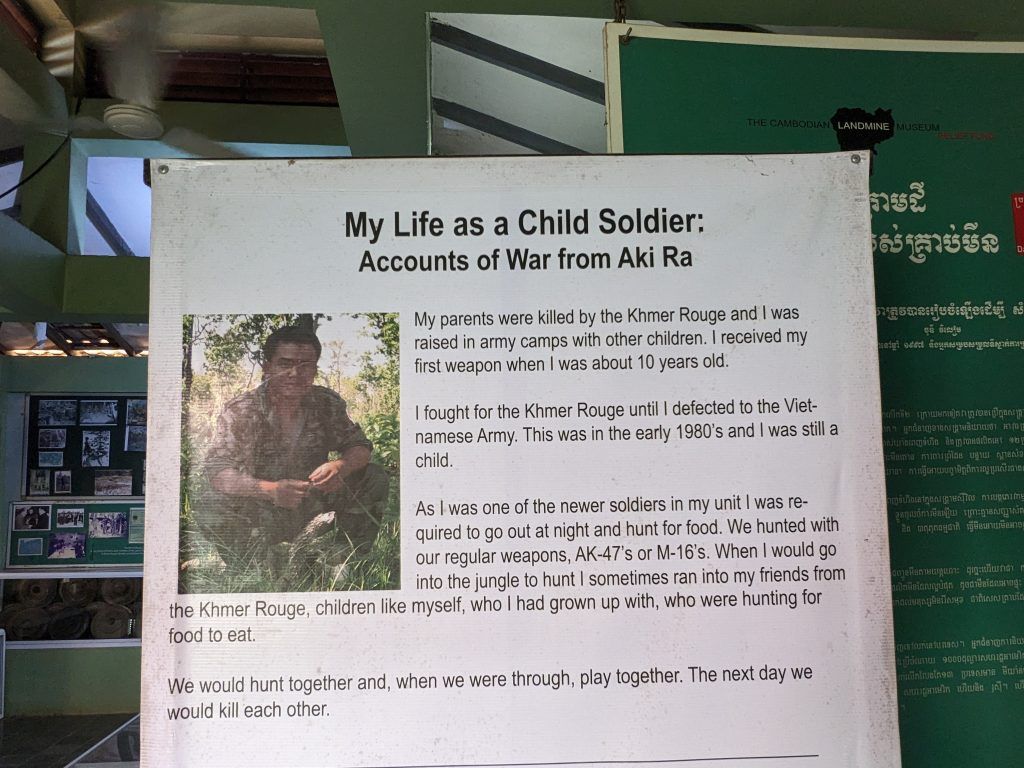
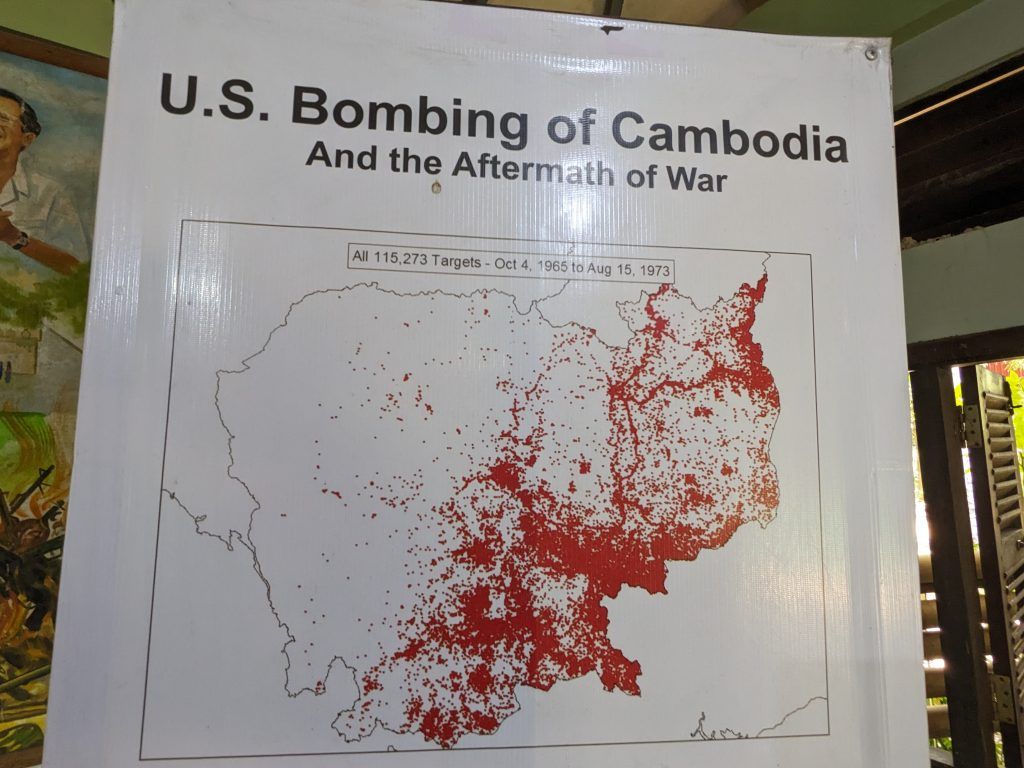

There is excellent documentation of the current work this organization is doing.
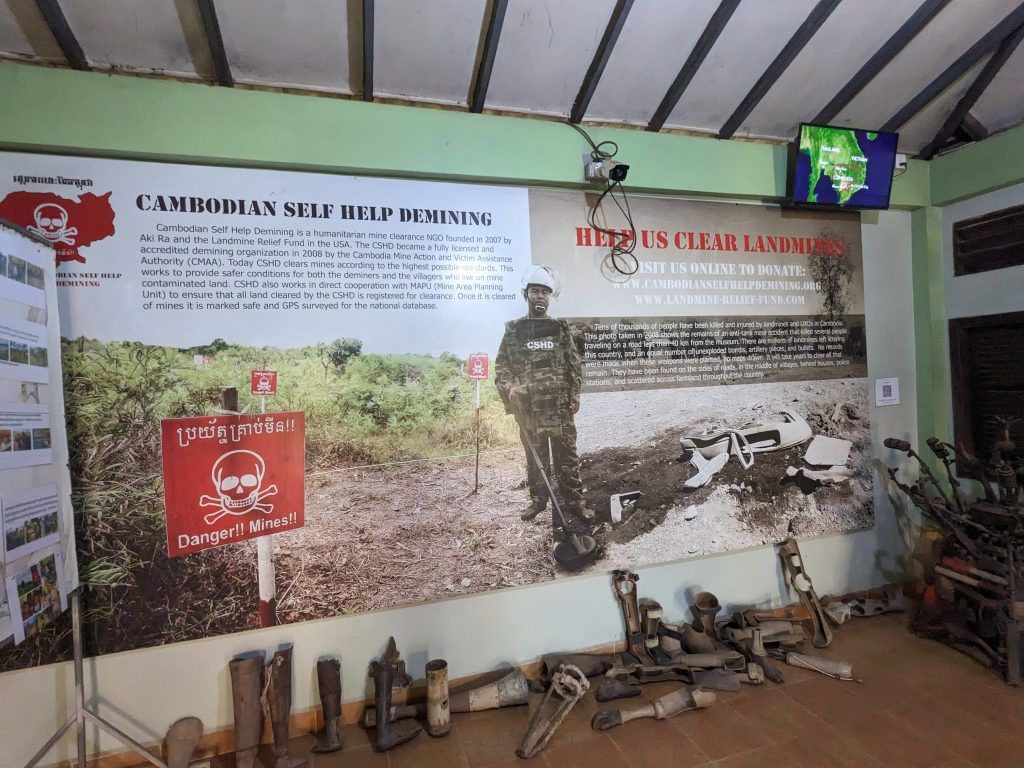

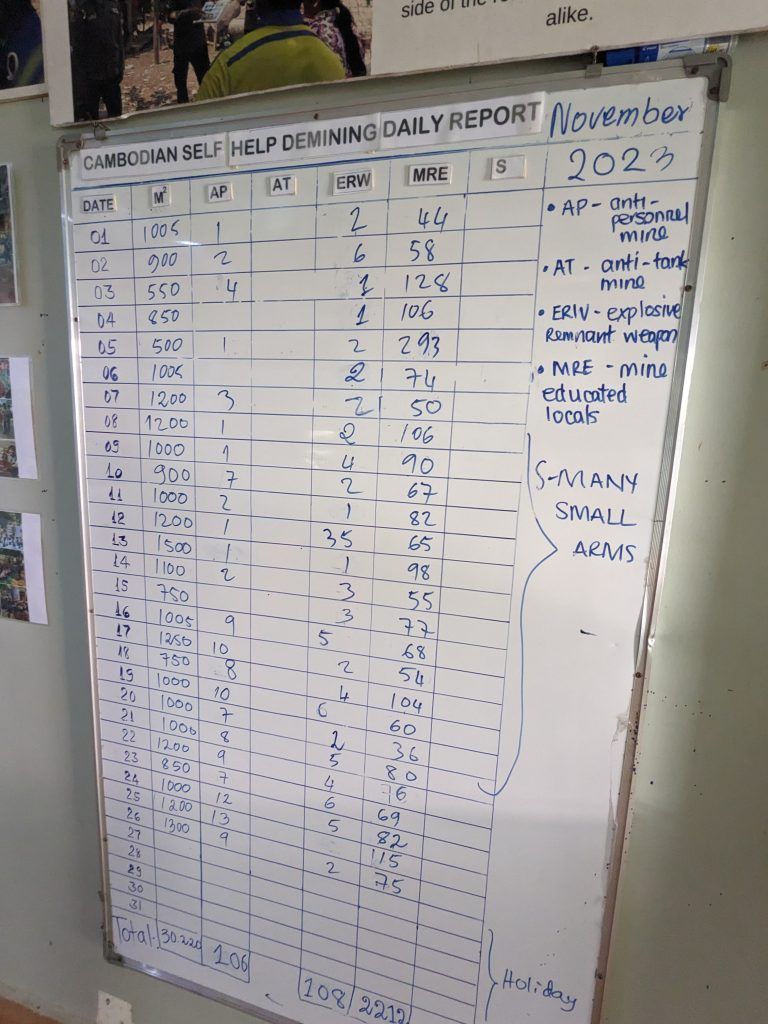

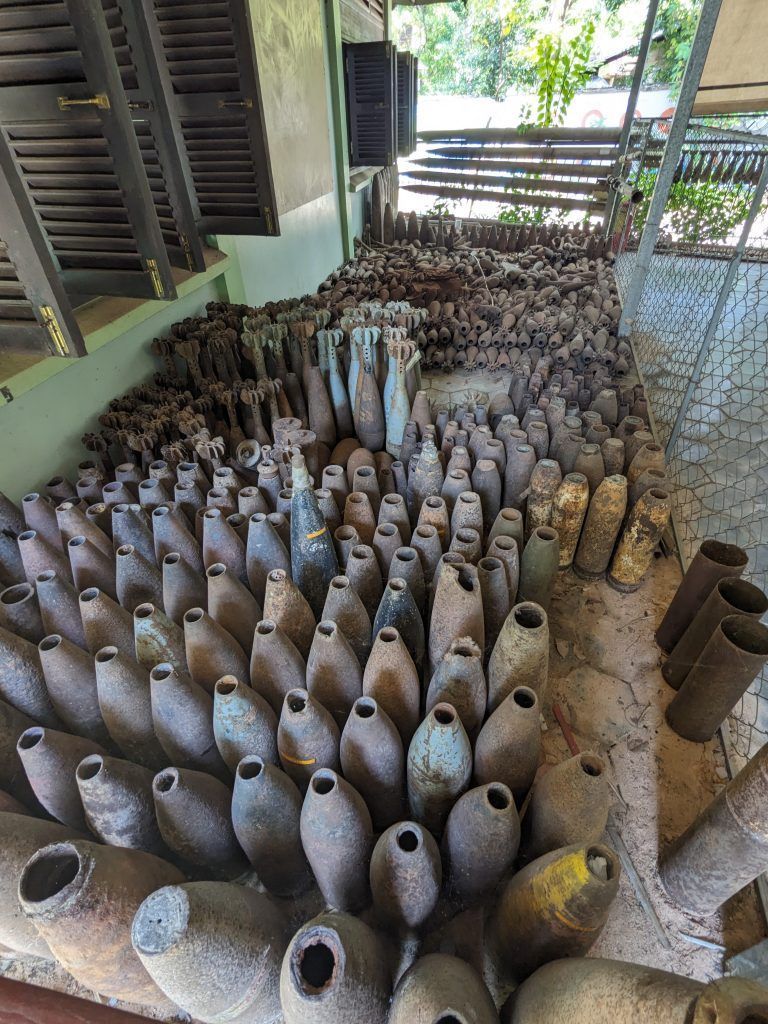

Phare The Cambodian Circus
And then there is the circus. Phare is a mix of comedy, modern dance and acrobatics. It’s not remotely on the level of a Cirque du Soleil, but when Guy Laliberté and Gilles Ste-Croix were honing their craft on the streets of Quebec in 1984, Cambodia was still devouring itself in war.
It is a wonderful show with a heartwarming history, as per their website: “Phare artists are students and graduates from Phare Ponleu Selpak’s (www.phareps.org) vocational training center in Battambang. The association was formed in 1994 by 9 young men coming home from a refugee camp after the Khmer Rouge regime. They were greatly helped during that time by an art teacher using drawing classes as therapy and wanted to share this new skill among the poor, socially deprived and troubled youngsters in Battambang. They founded an art school and public school followed to offer free education. A music school and theatre school were next and finally, for the kids who wanted more, the circus school. Today more than 1,200 pupils attend the public school daily and 500 attend the alternative schools. Phare Ponleu Selpak also has extensive outreach programs, trying to help with the problems highlighted in their own tales. Phare The Cambodian Circus offers these students and graduates somewhere to hone their skills and a place to earn a decent wage. Money that will take them out of poverty and give them self-respect and freedom.”
Banteay Srey Butterfly Center
From Wikipedia: “Banteay Srey Butterfly Centre has been designed and financed by Ben Hayes and Mike Baltzer, two British butterfly enthusiasts, who had previously set up the Zanzibar Butterfly Centre in Tanzania, East Africa. It is financed as a tourist attraction, generating income for running the centre and local charity projects.”
It’s a wonderful little place and you can see how they go from raising eggs to caterpillars to chrysalises to butterflies.
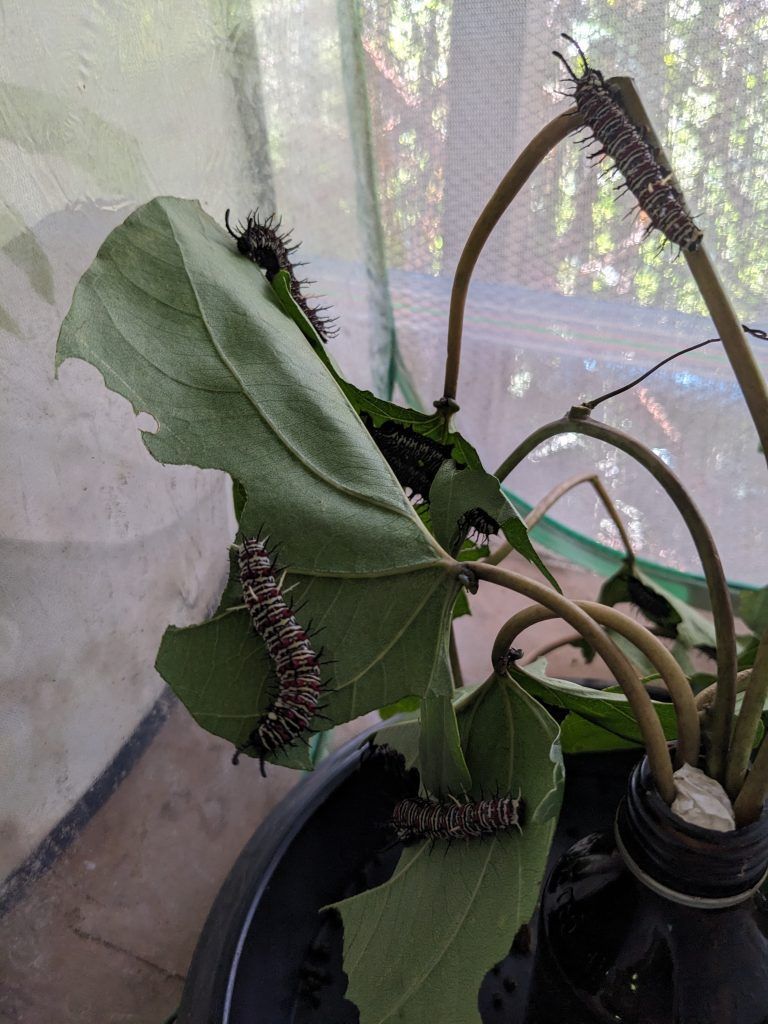


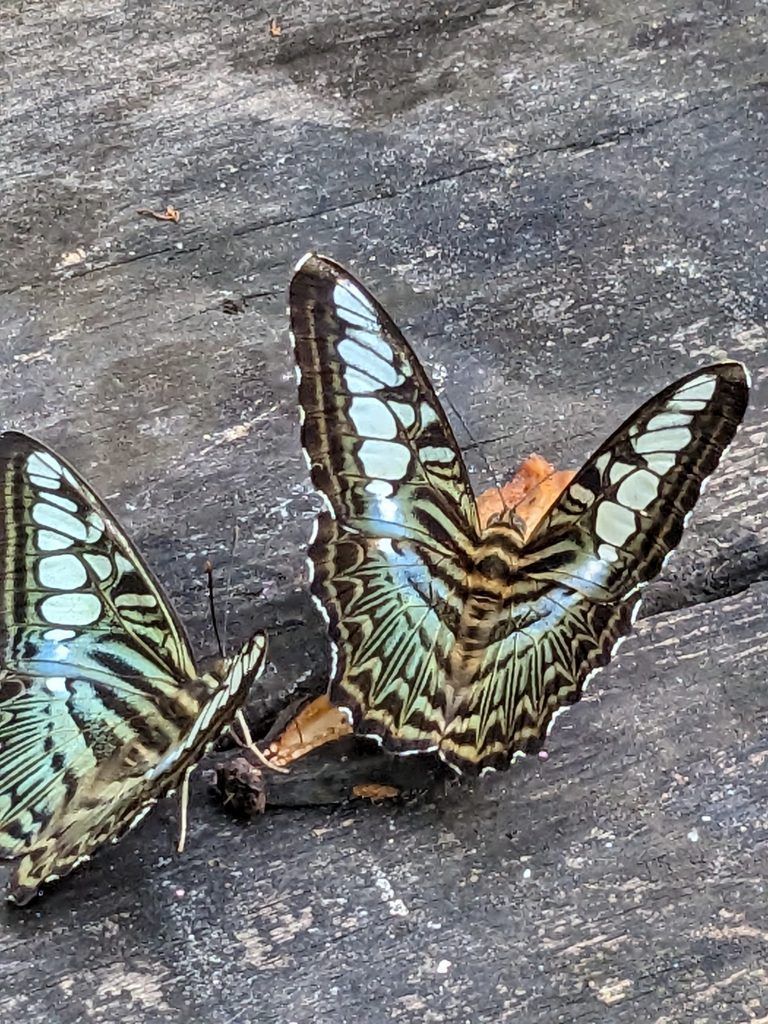
Some dragonflies also make their home here.
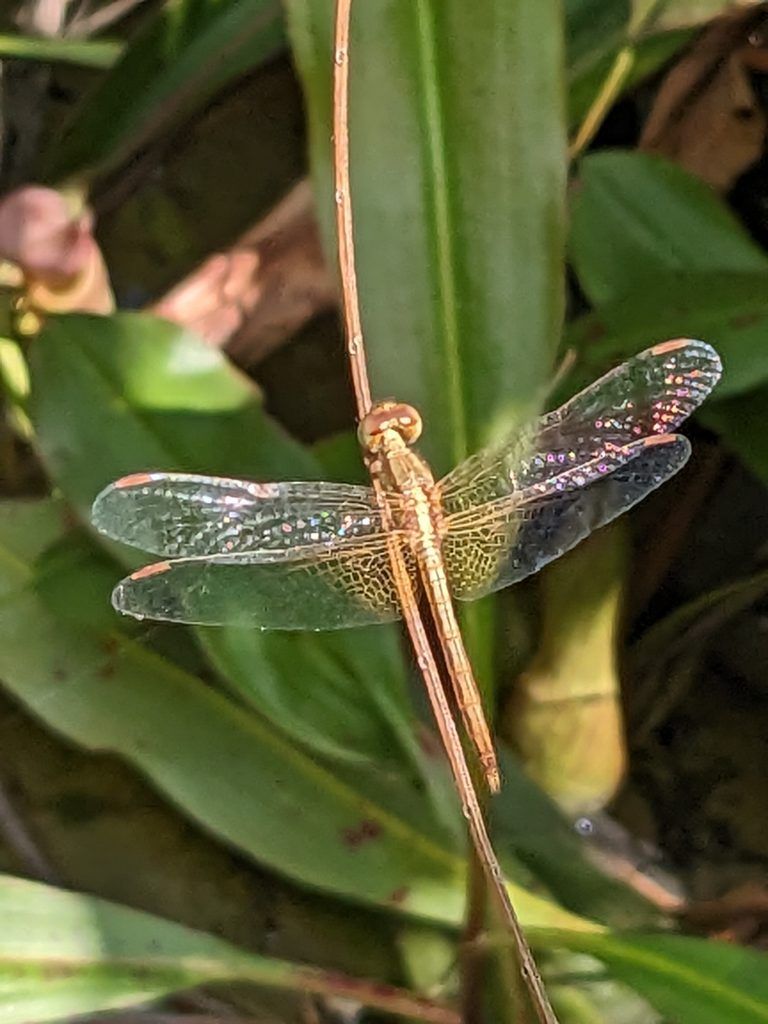
These are two large adult stickbugs. You can see a tiny baby towards the top left corner.

Siem Reap
Siem Reap is the second largest city in Cambodia and is growing rapidly as it’s taking advantage of the Angkor tourist boom. It’s a much smaller and more liveable city than Phnom Penh, and there are a lot of Western tourists and expats in the central part of the city.
Pub Street is the main boulevard for the bars and night life.
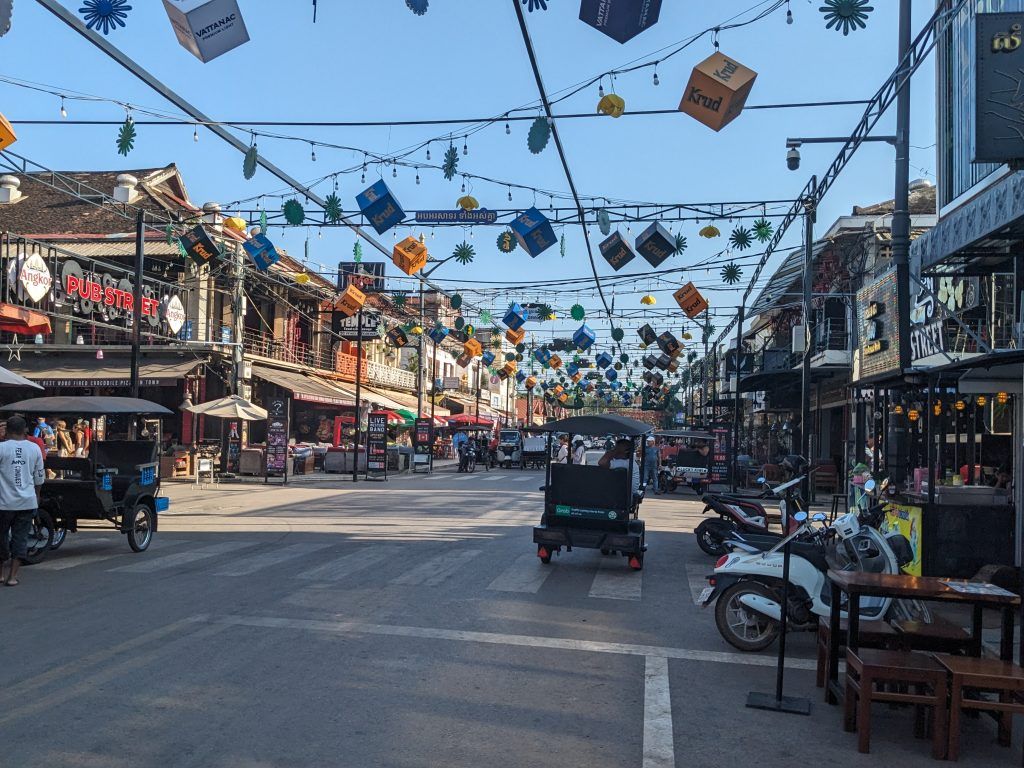
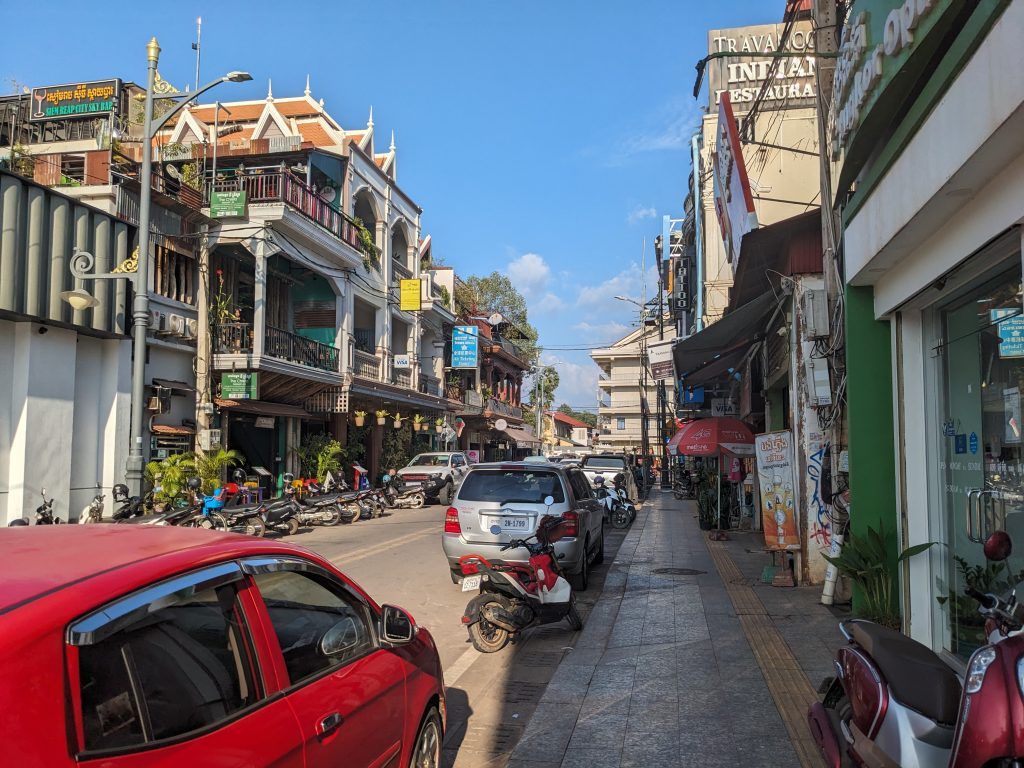
Just outside the main part of the city, things go back to being crowded, chaotic and Cambodian again.
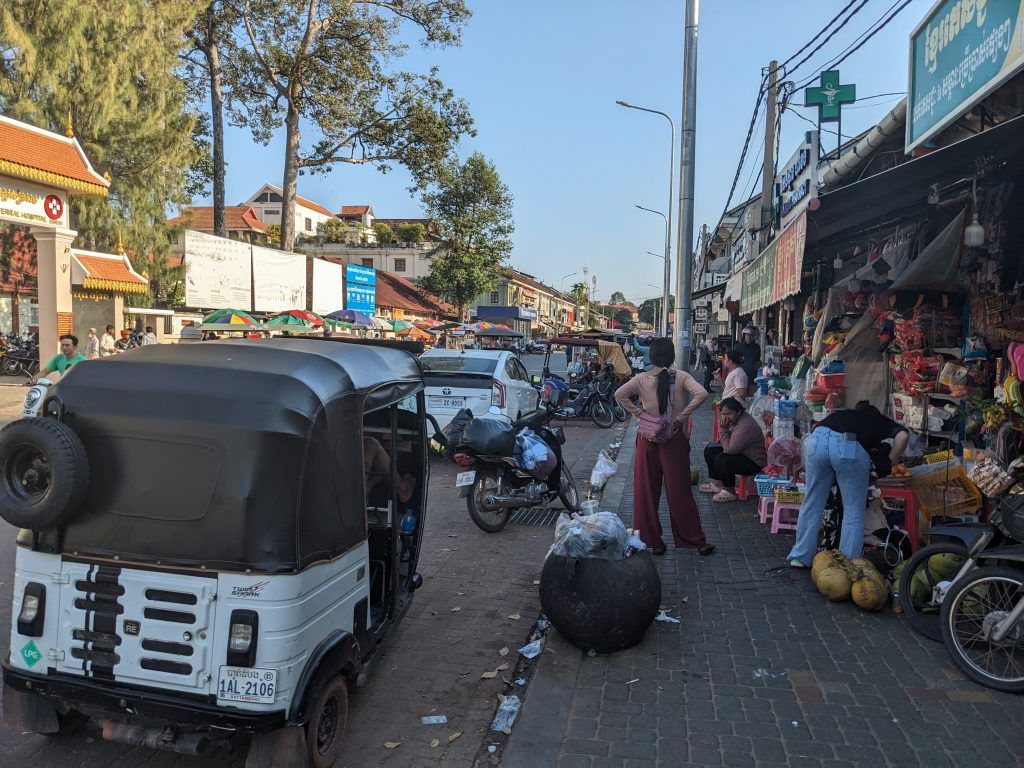
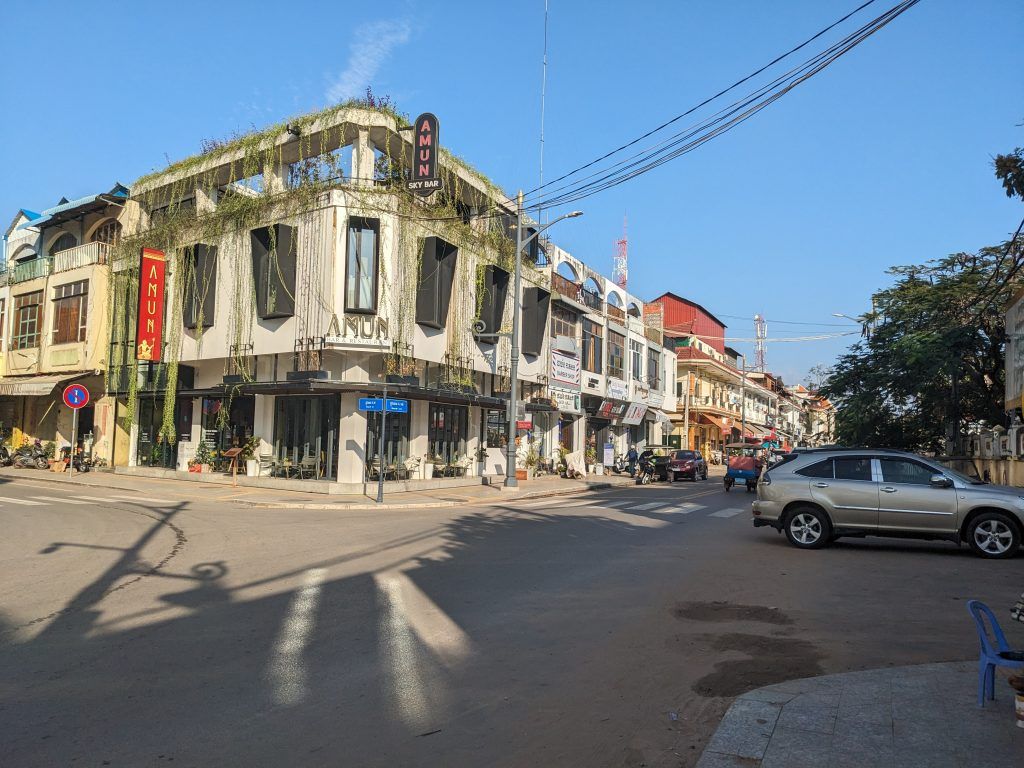
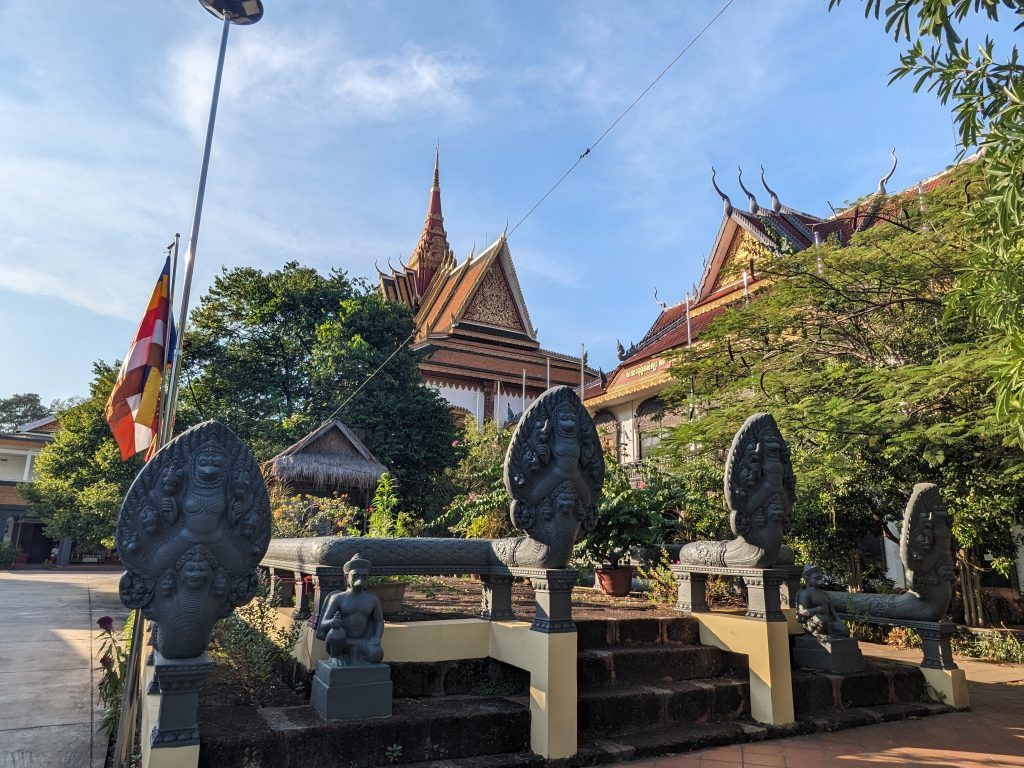
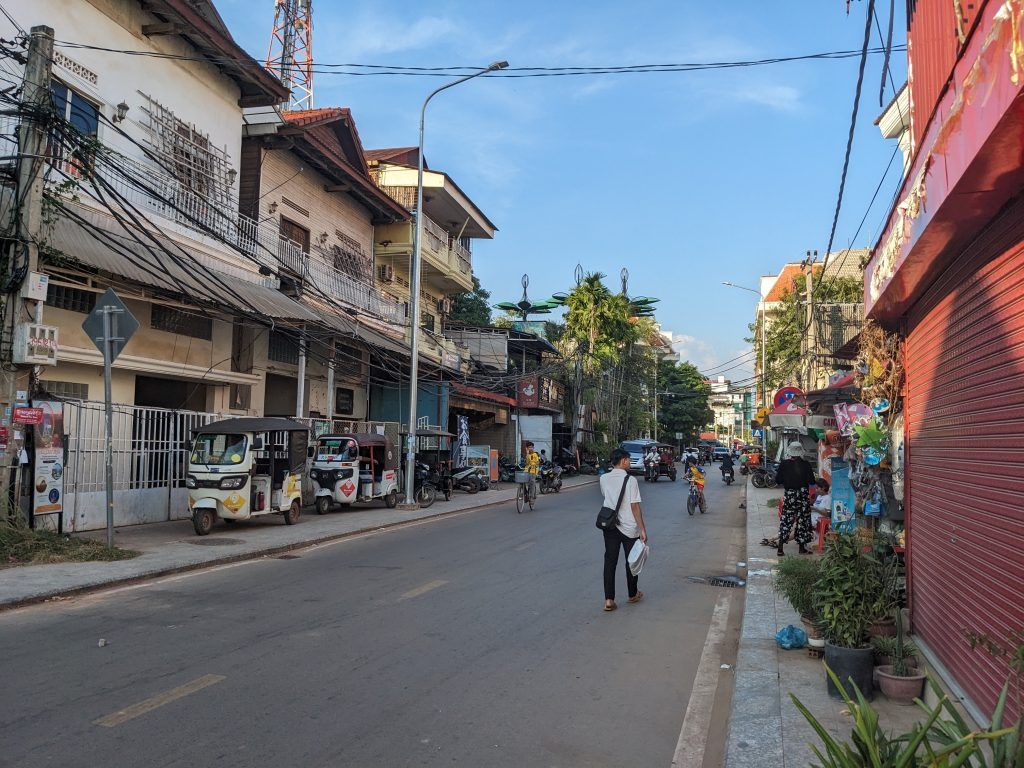
It has a really nice riverfront which lends a relaxed air to the city.
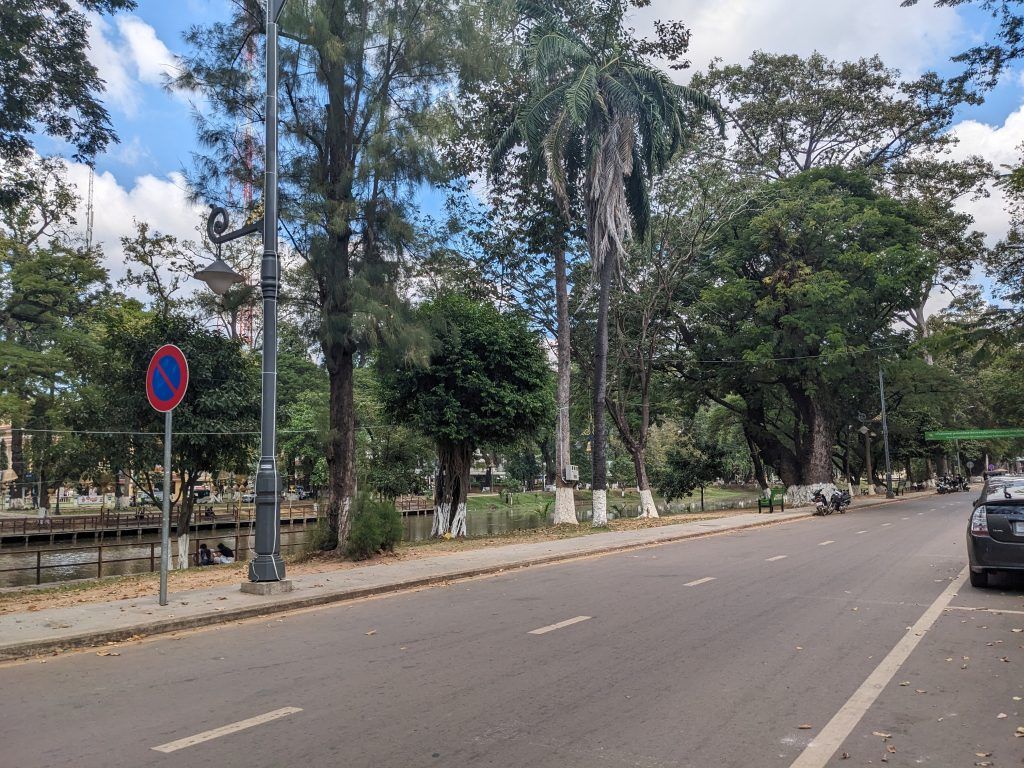
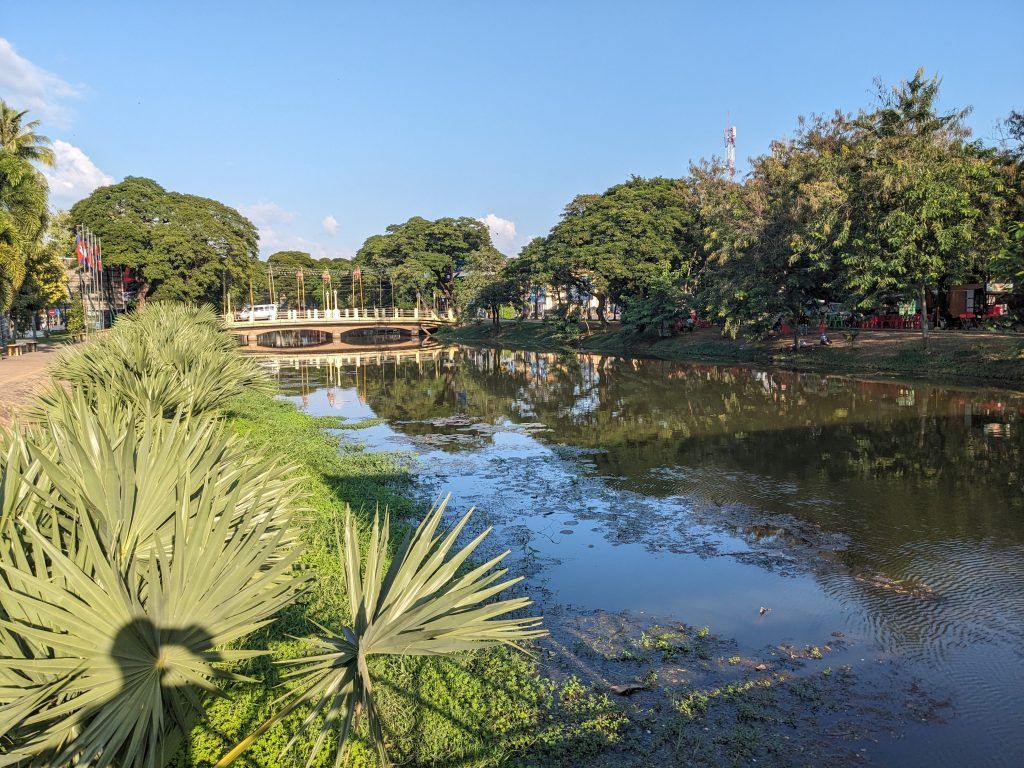
I stayed in a very comfortable Airbnb studio apartment in a new building complex just outside the city center. My host, Anachak, is 51 years old. When he was young, Cambodians were only allowed to study Vietnamese or Russian. Learning English was illegal. His parents put him in underground schools to learn English. He had been in senior positions in the hotel business until covid struck. So he opened a high end bicycle repair shop. He also has some Airbnb rentals and runs a small luxury tuk tuk service to tour the ruins. In a place like Cambodia, you need to really hustle to make things work for you.
